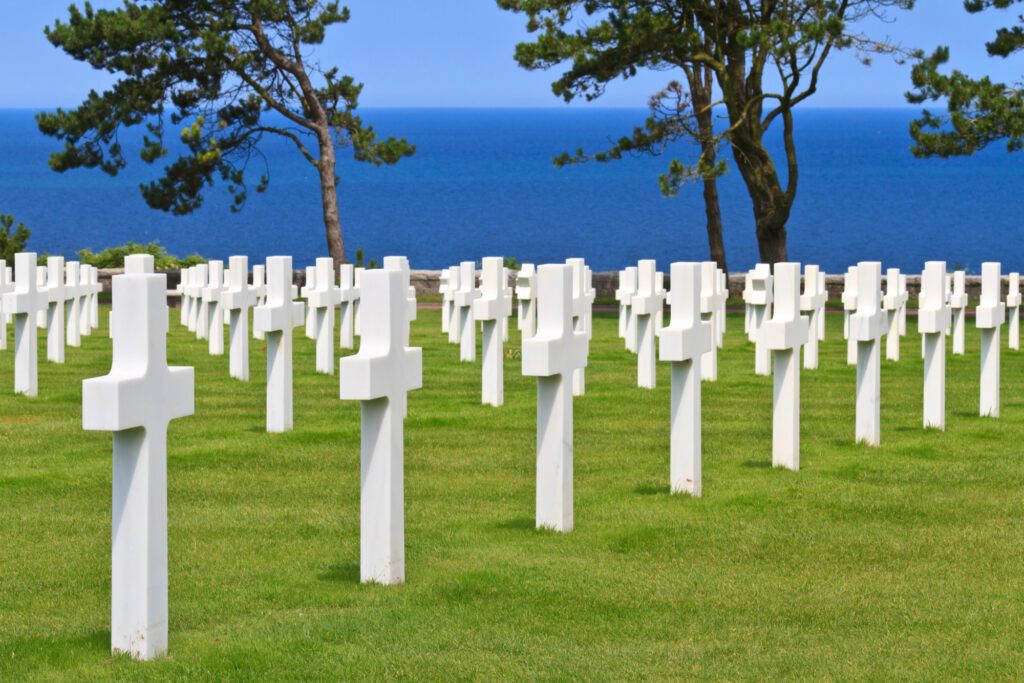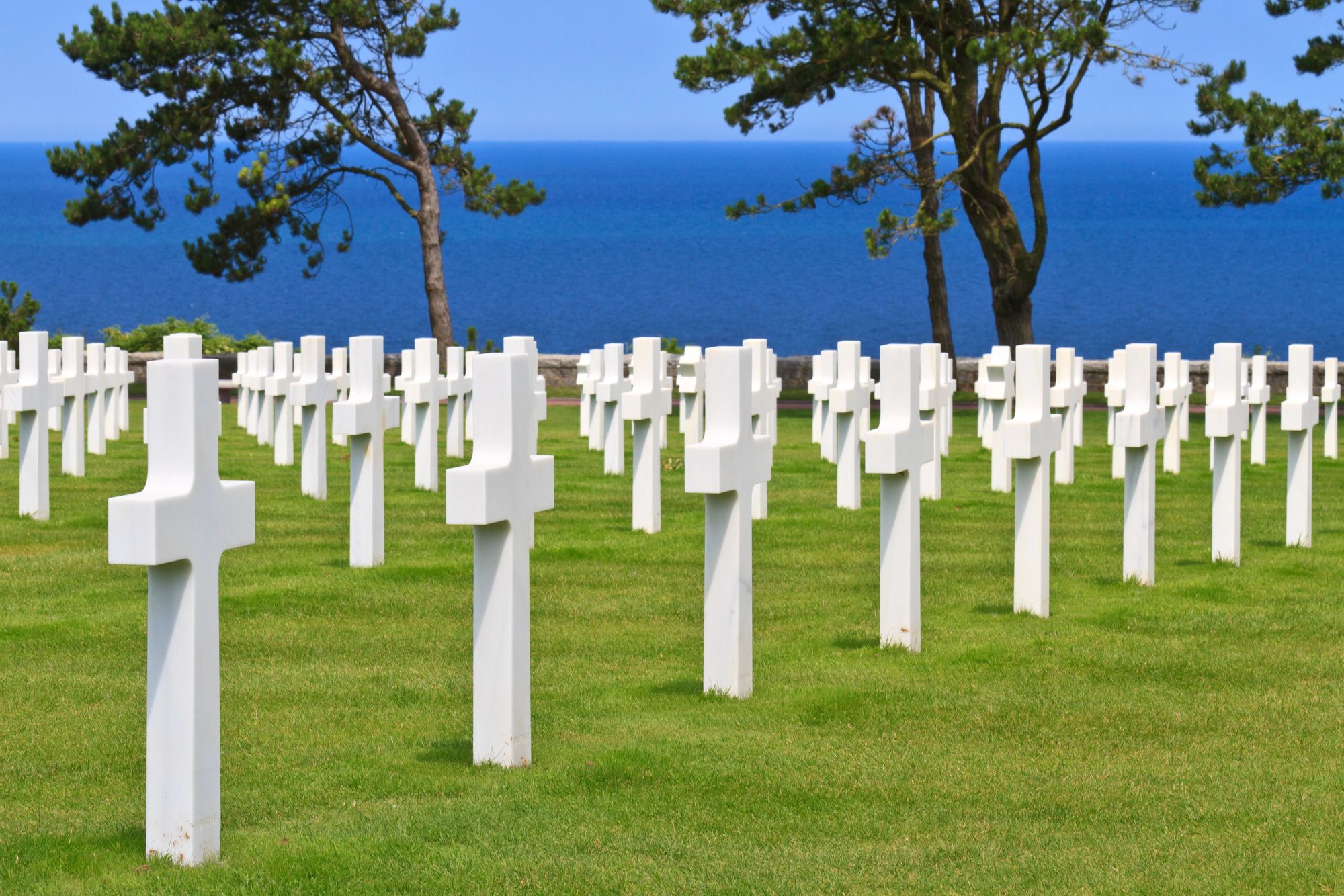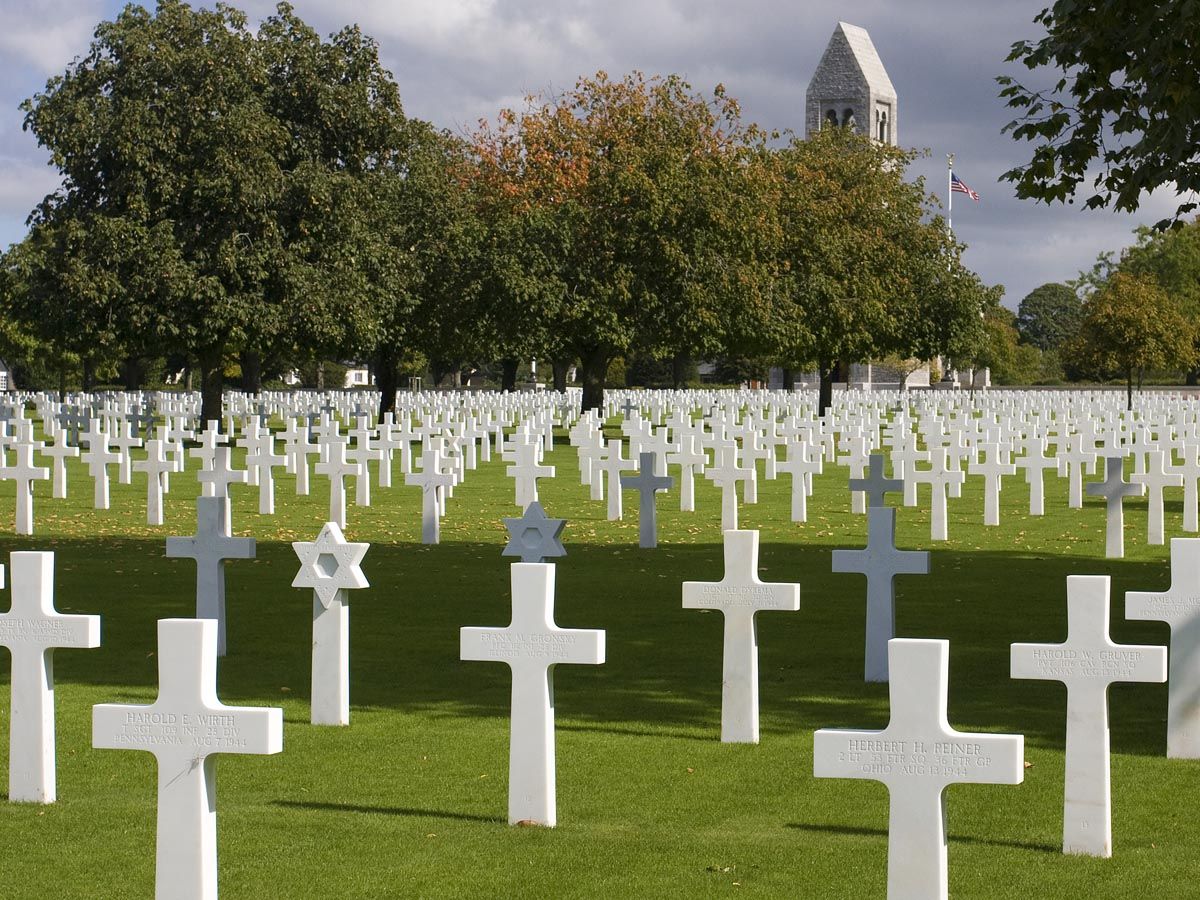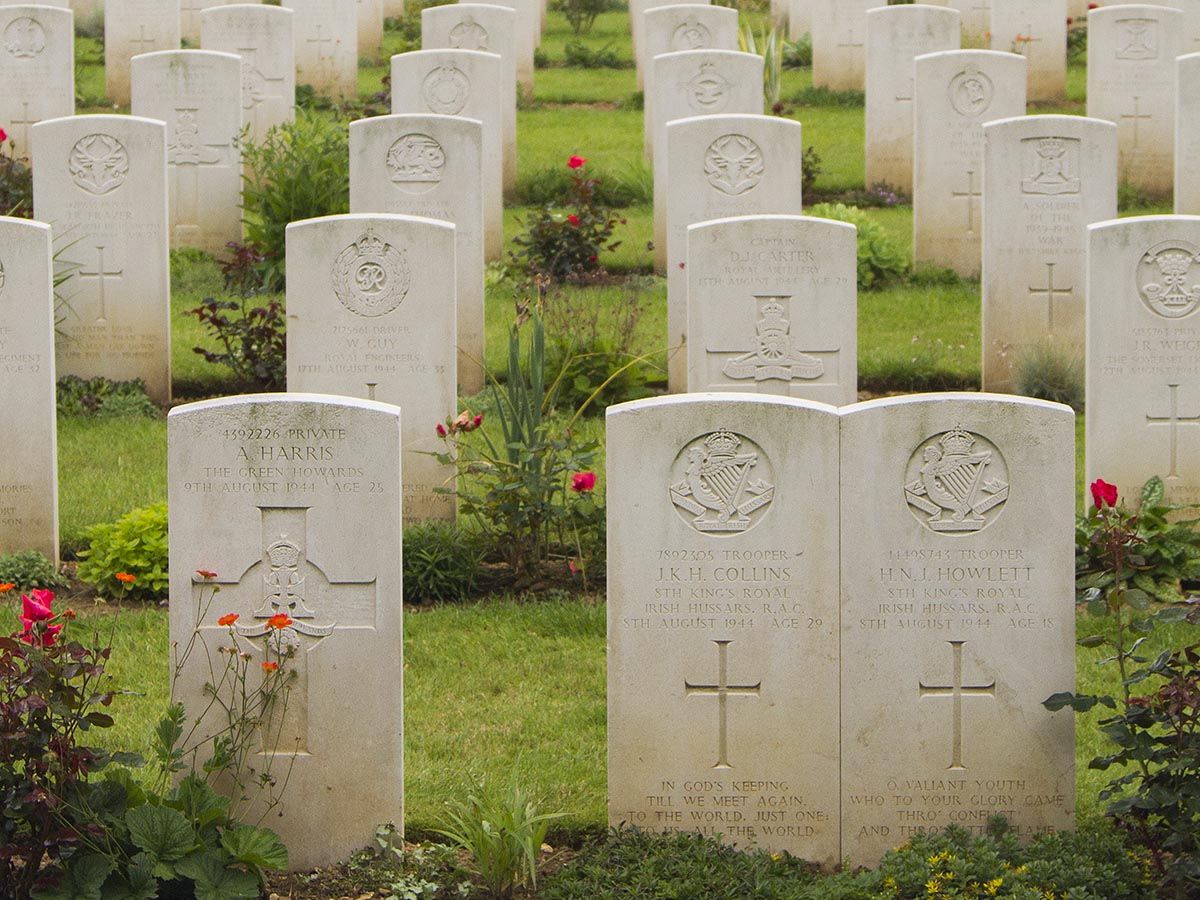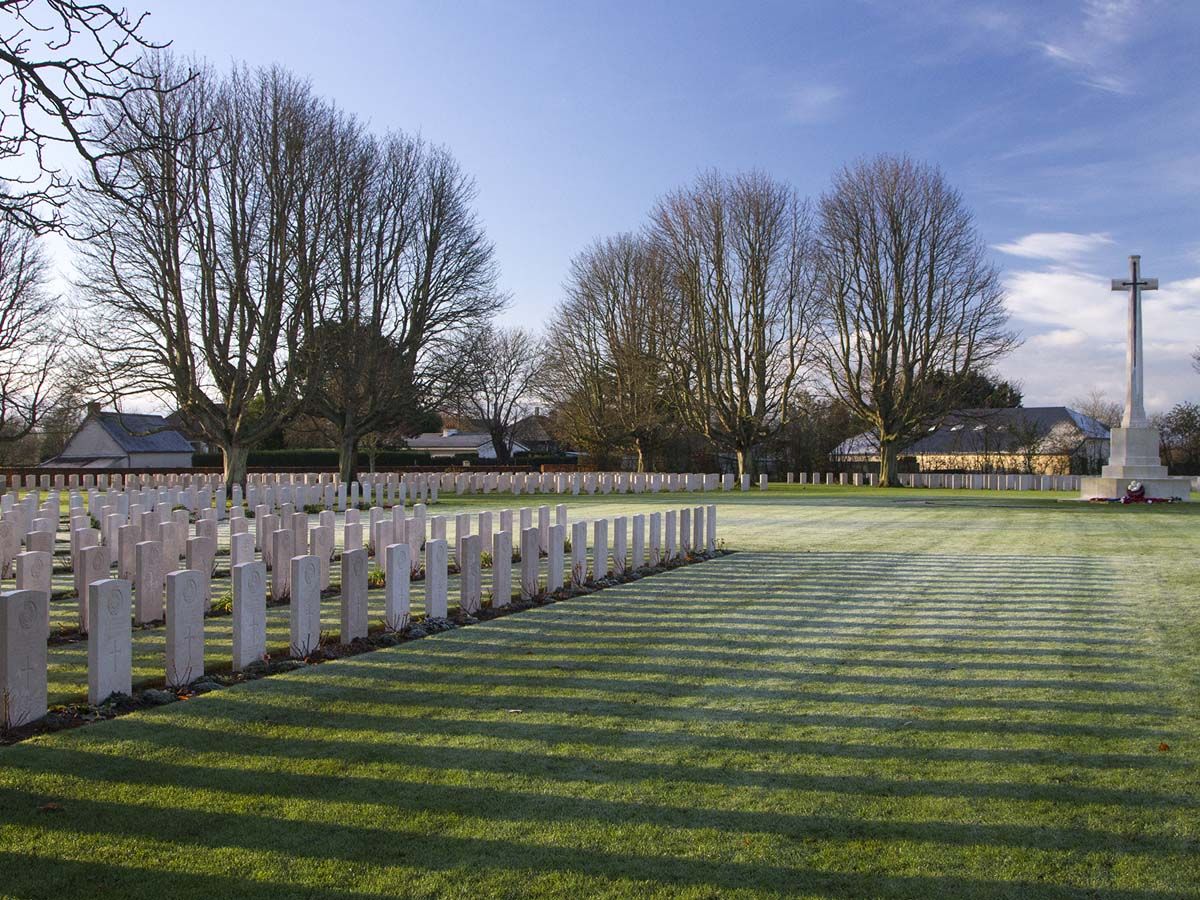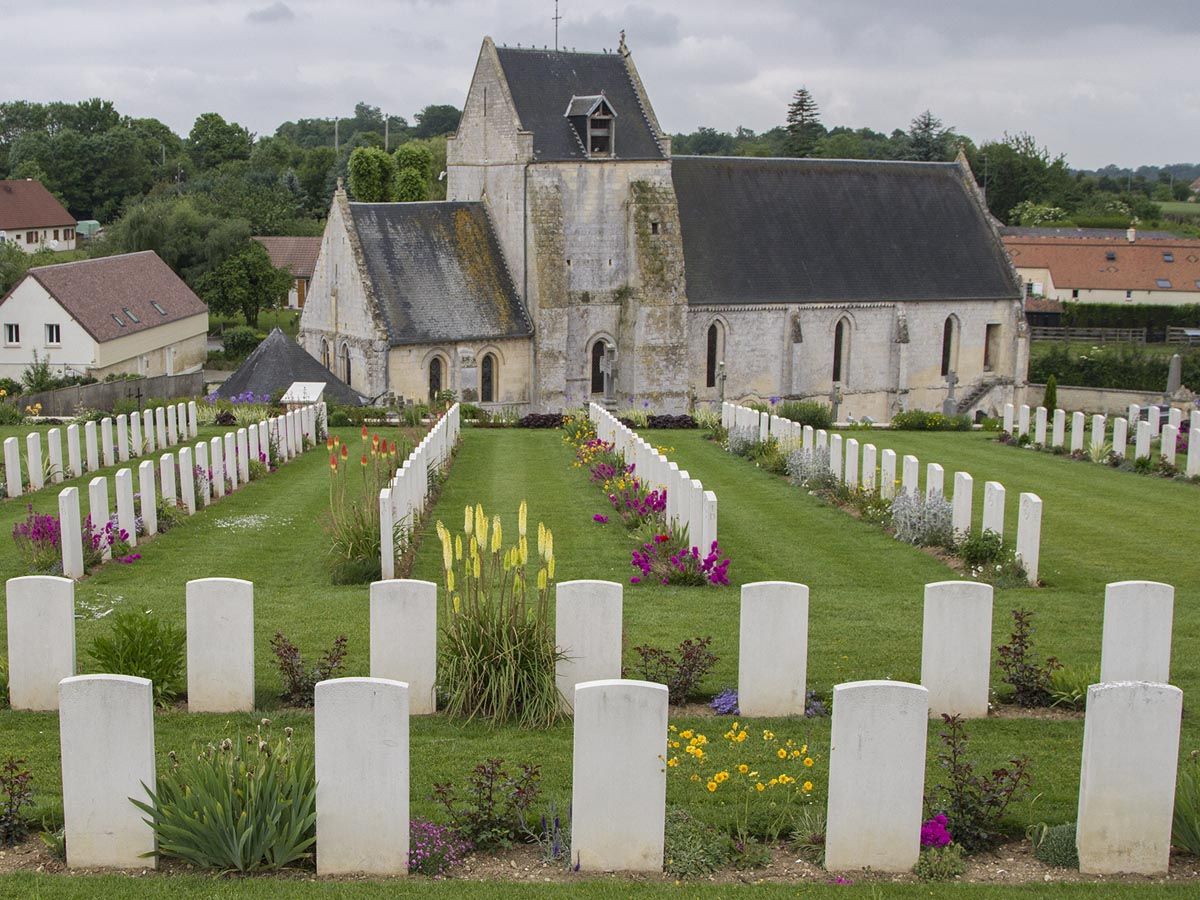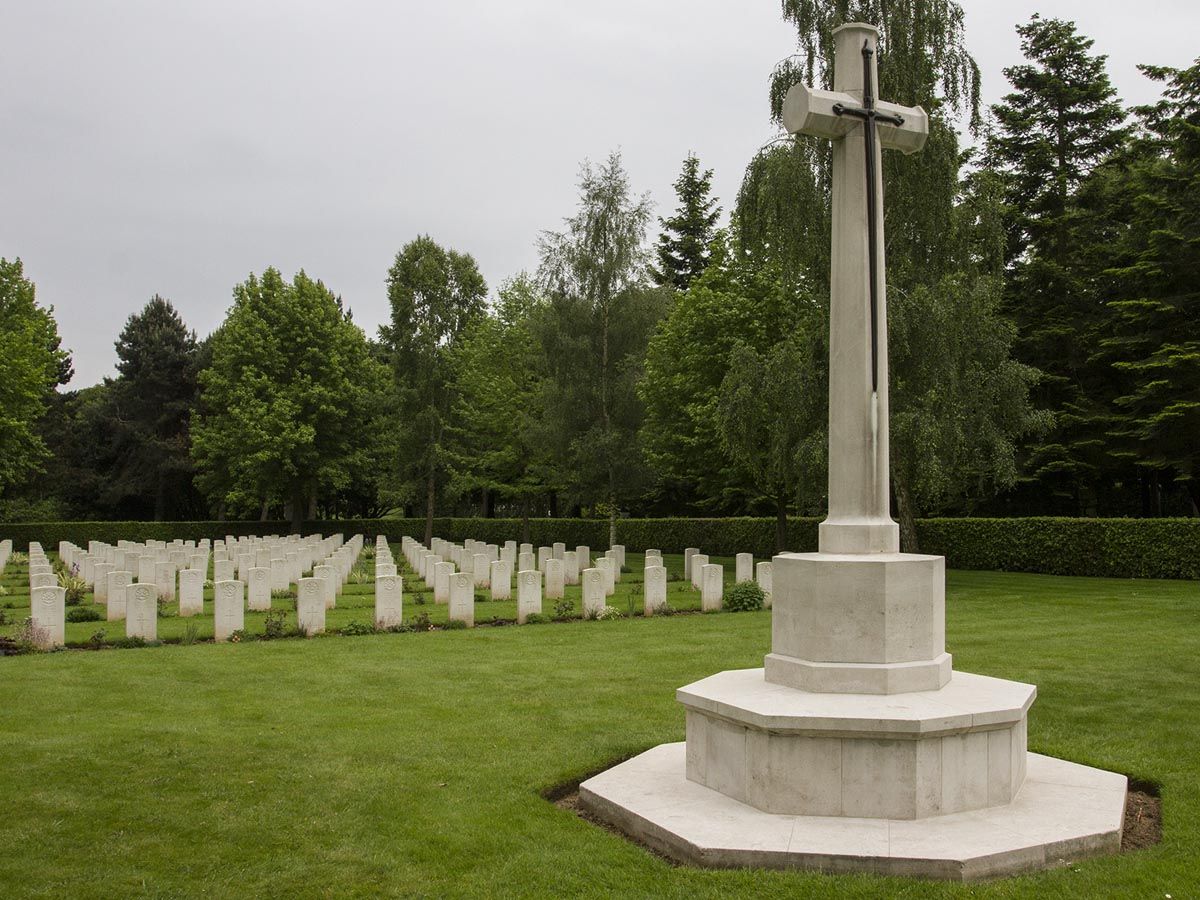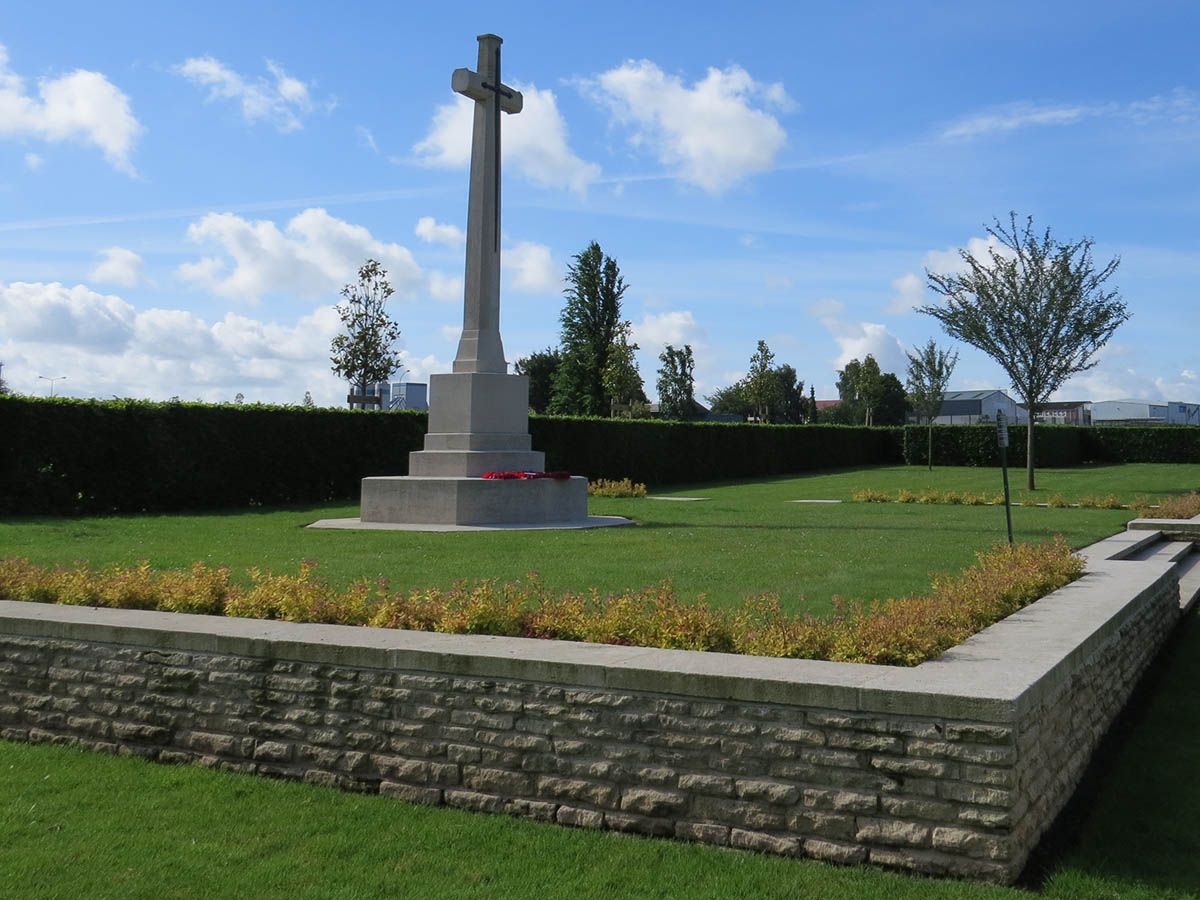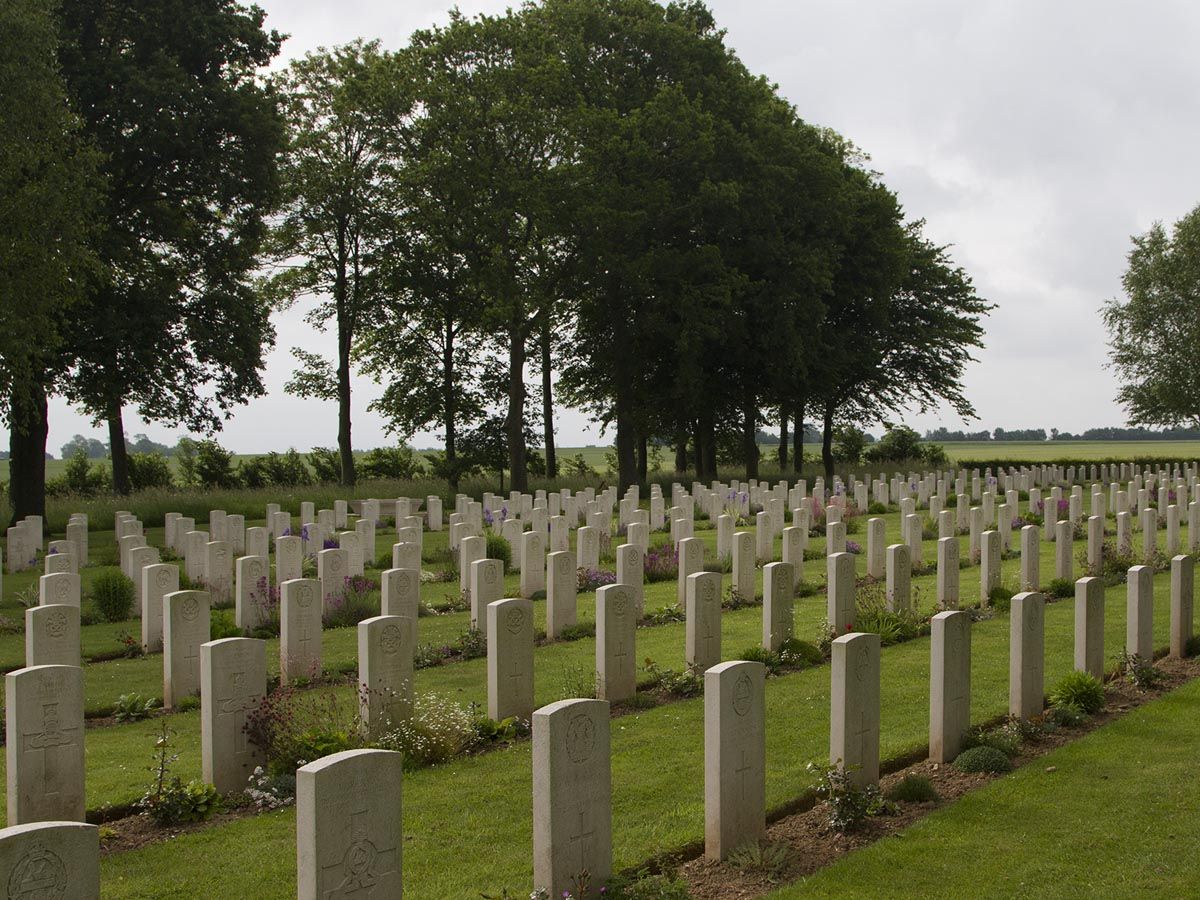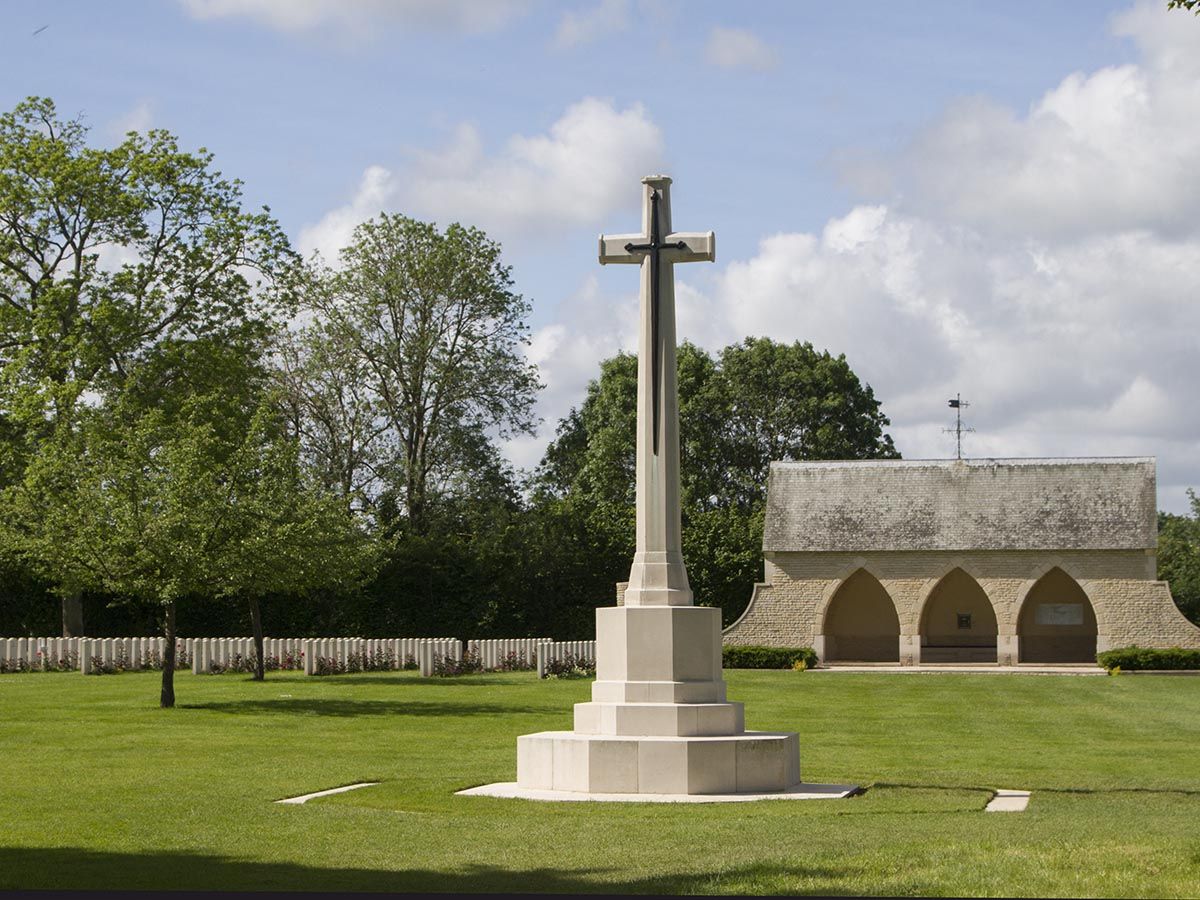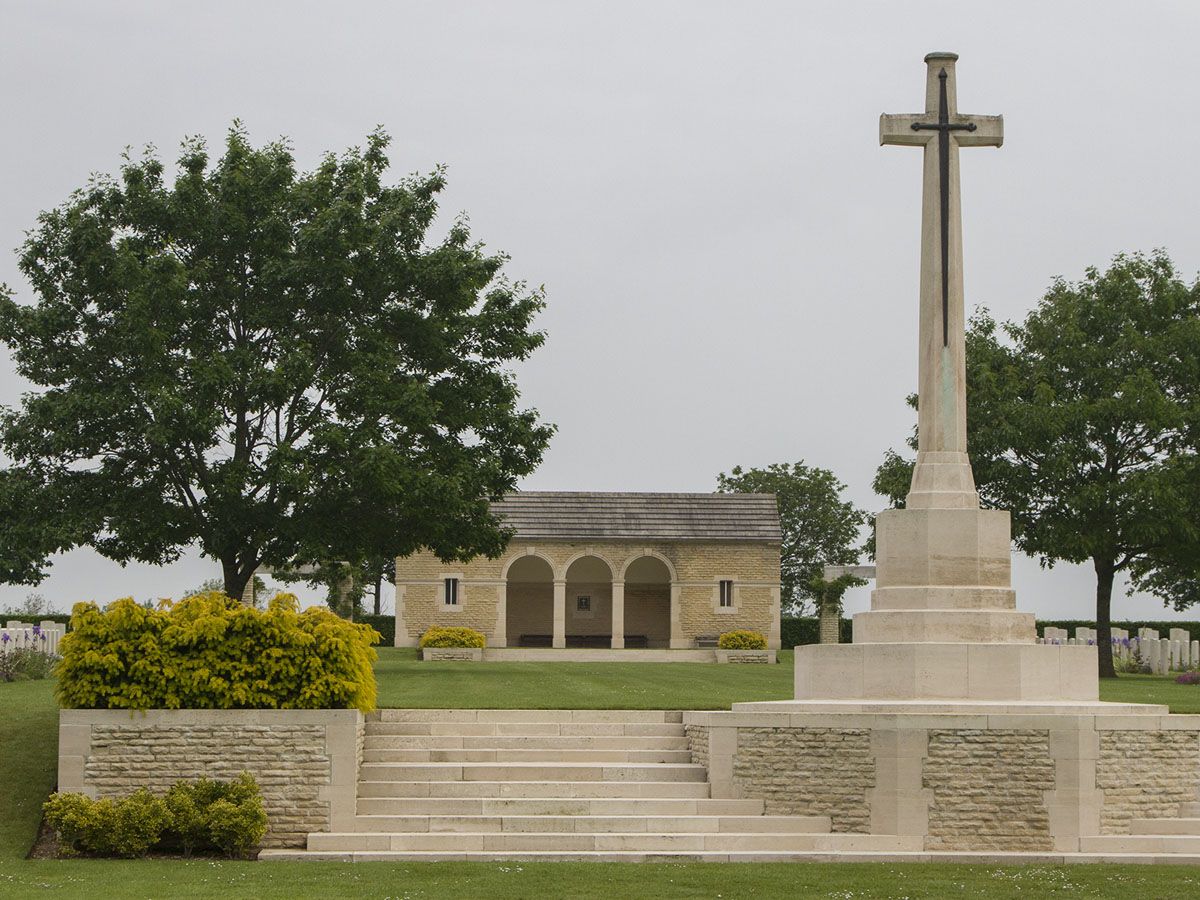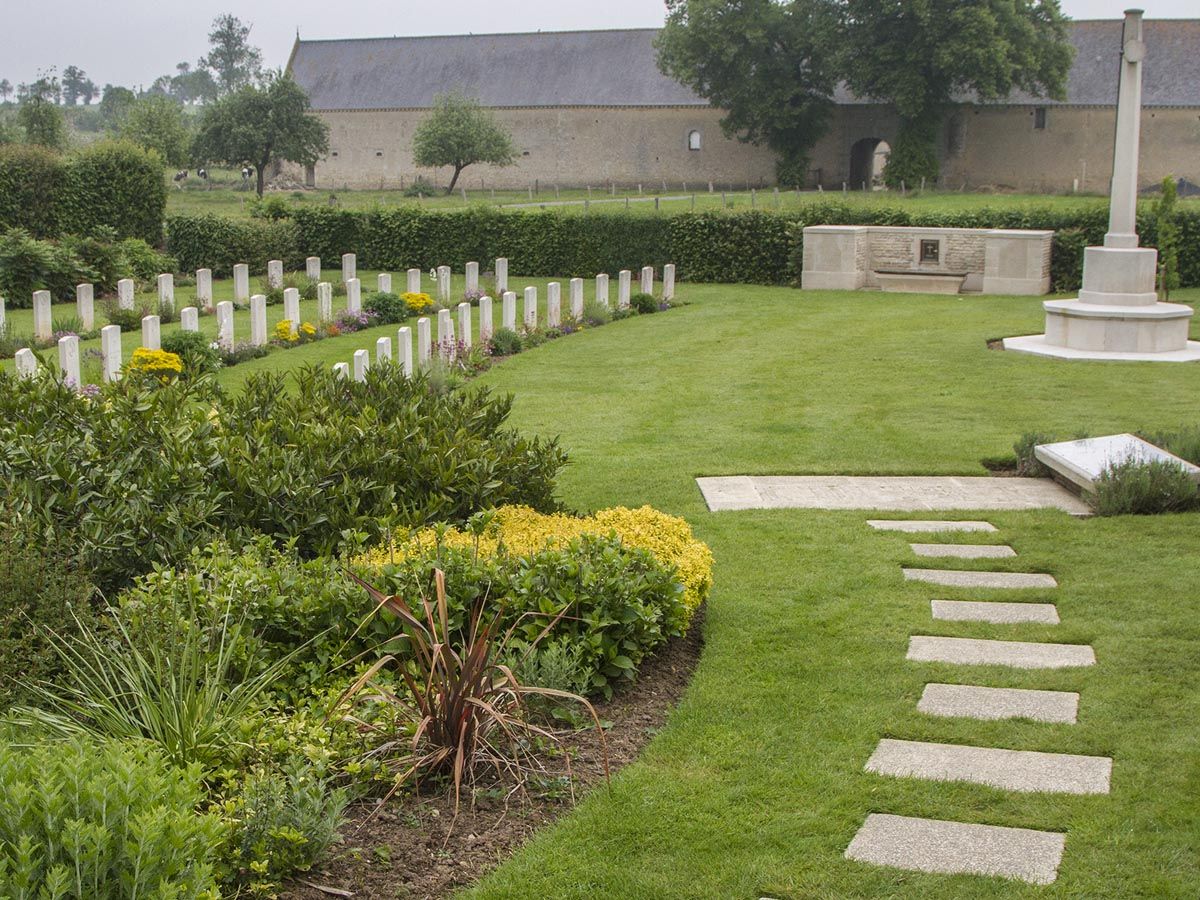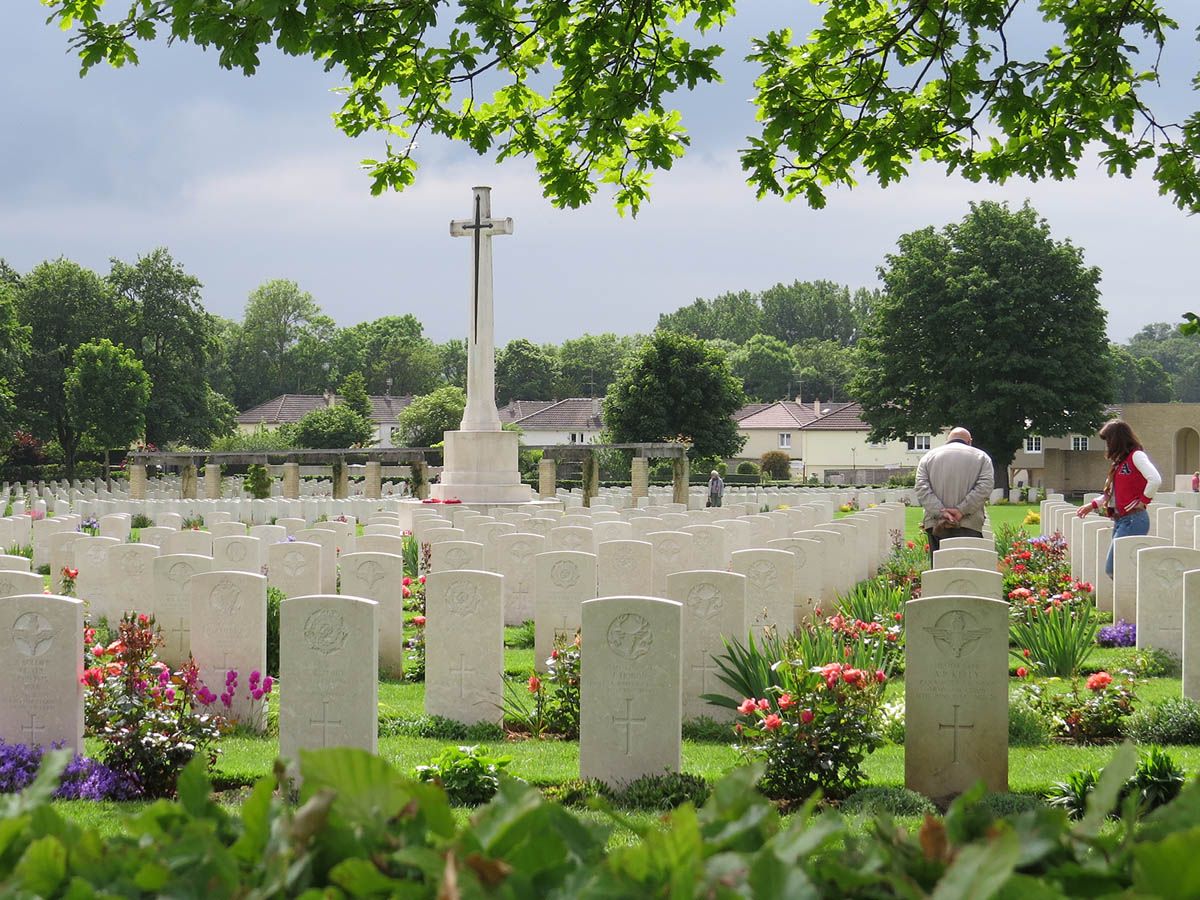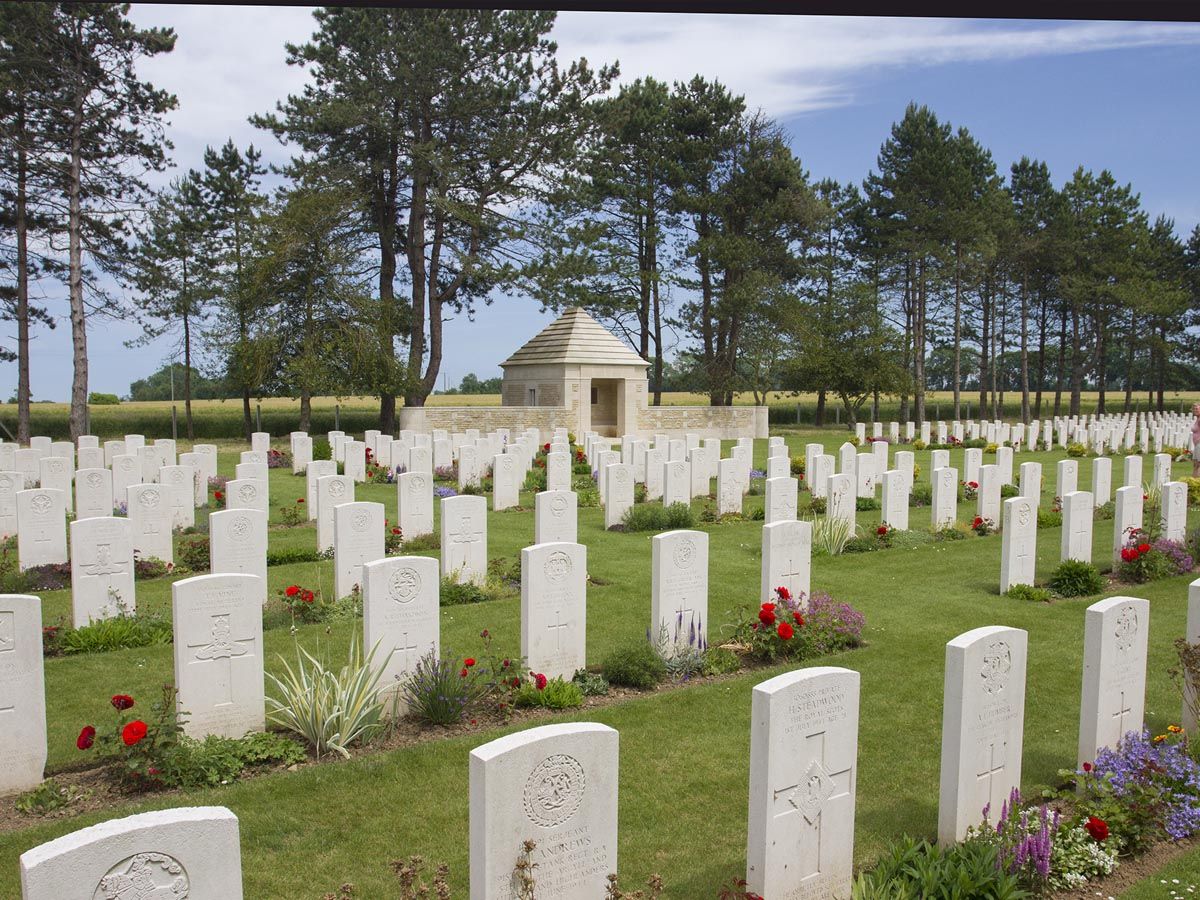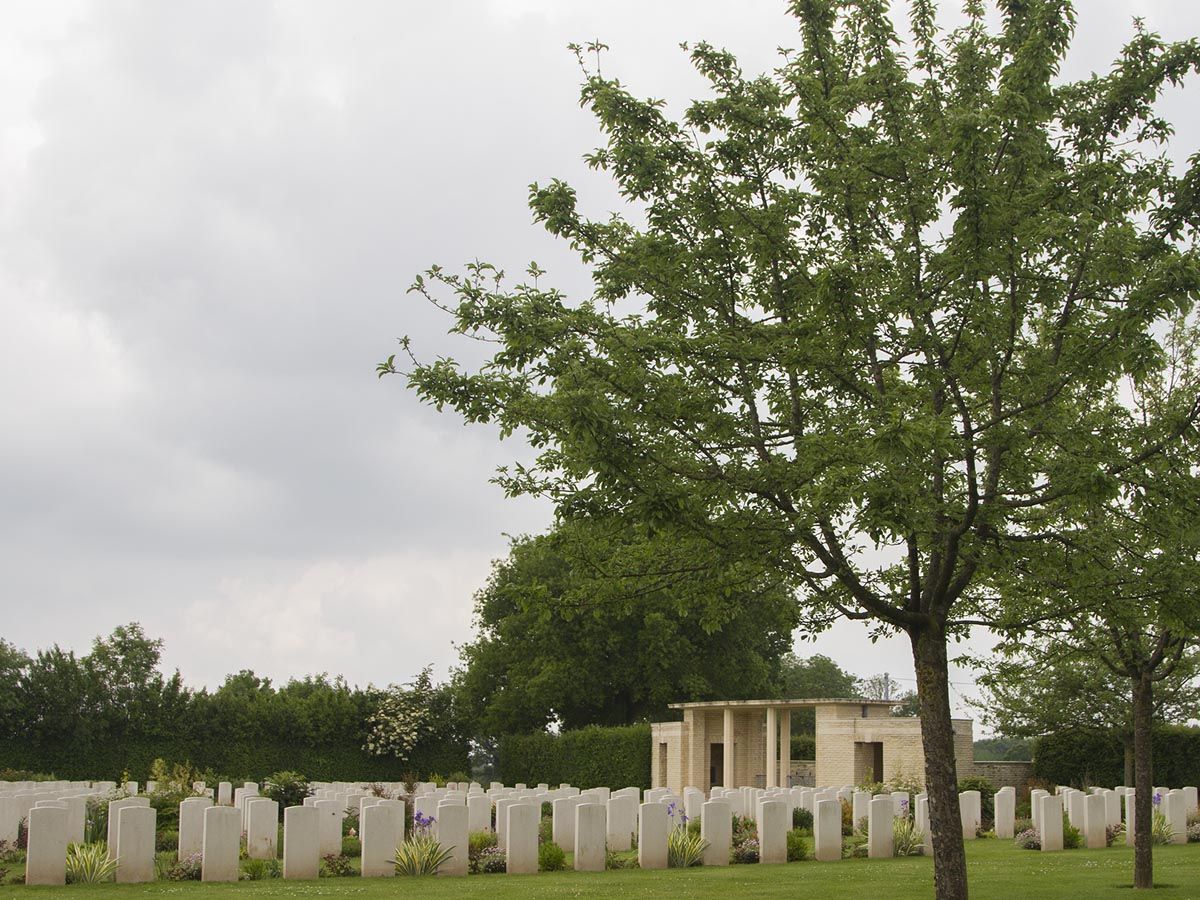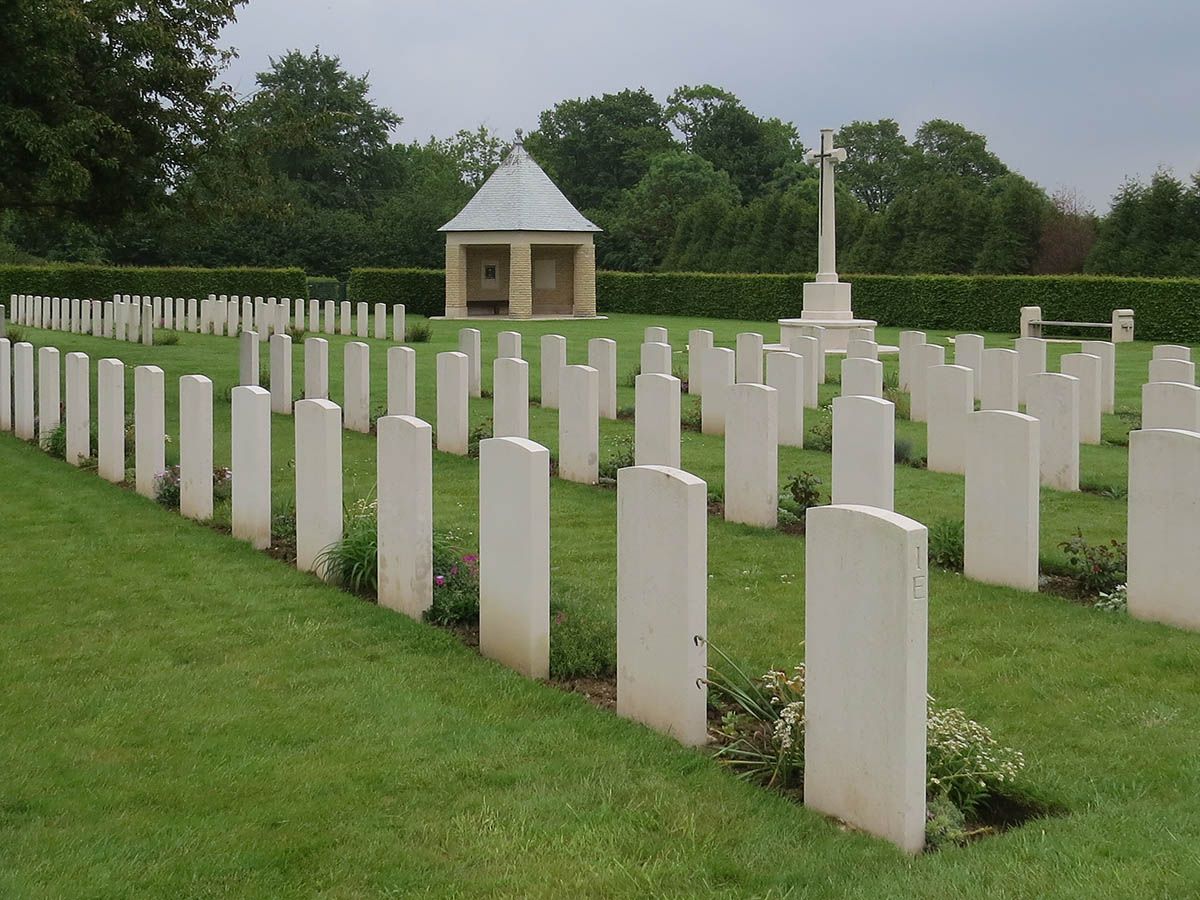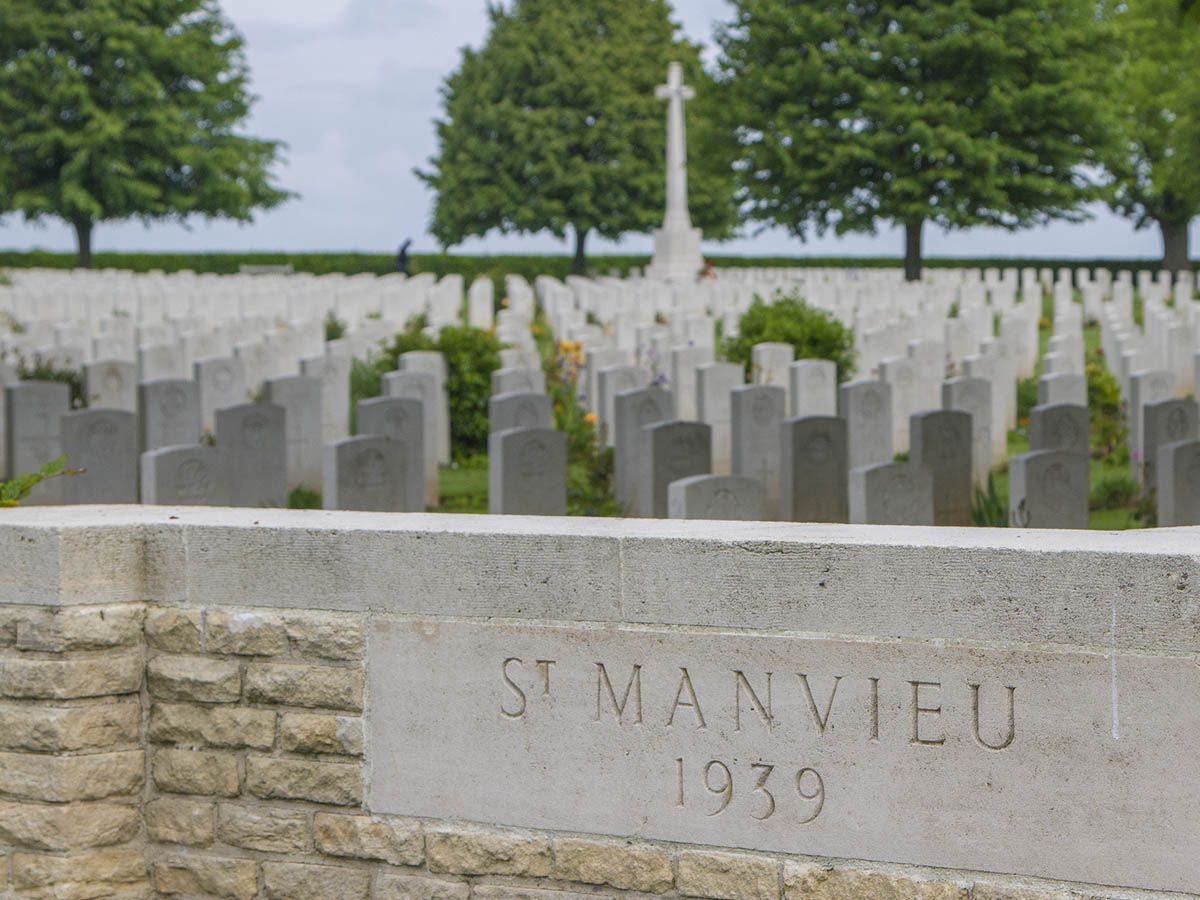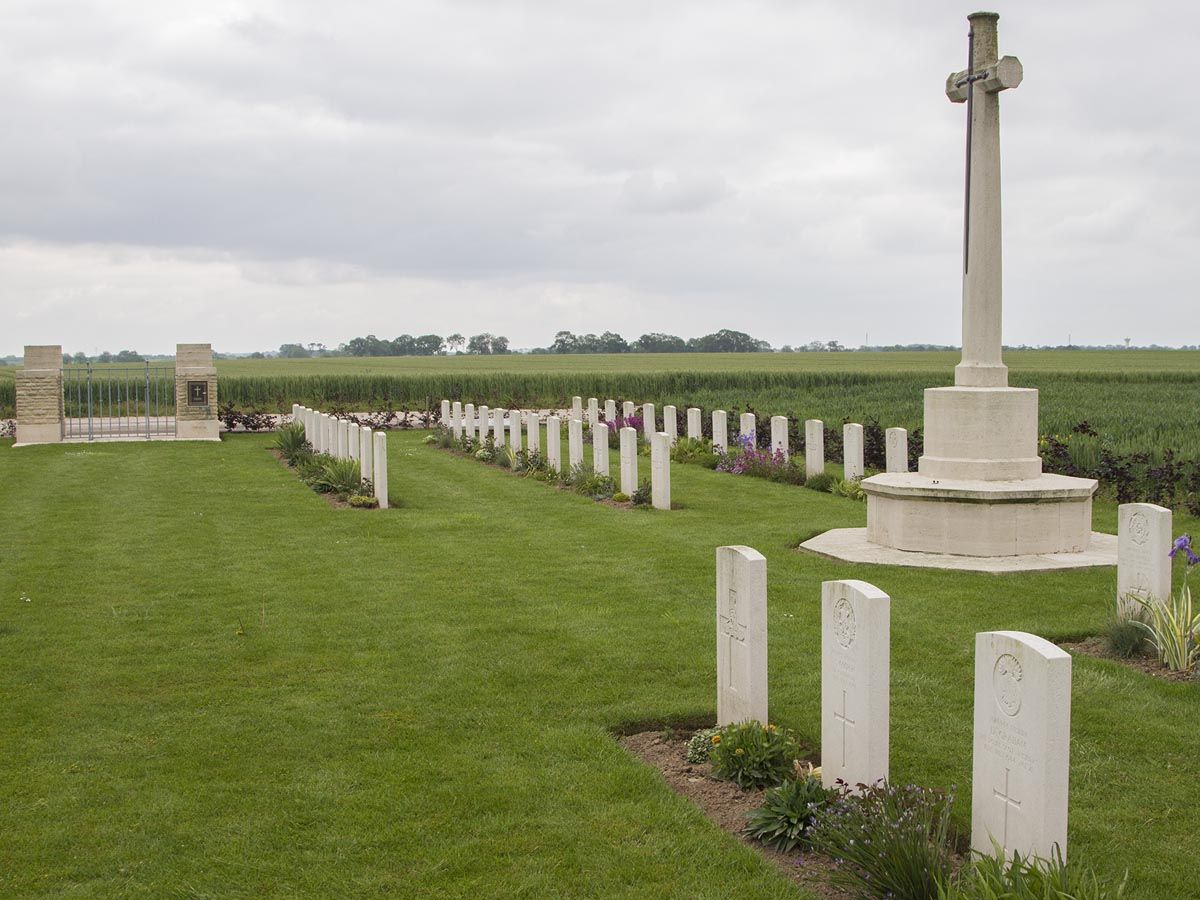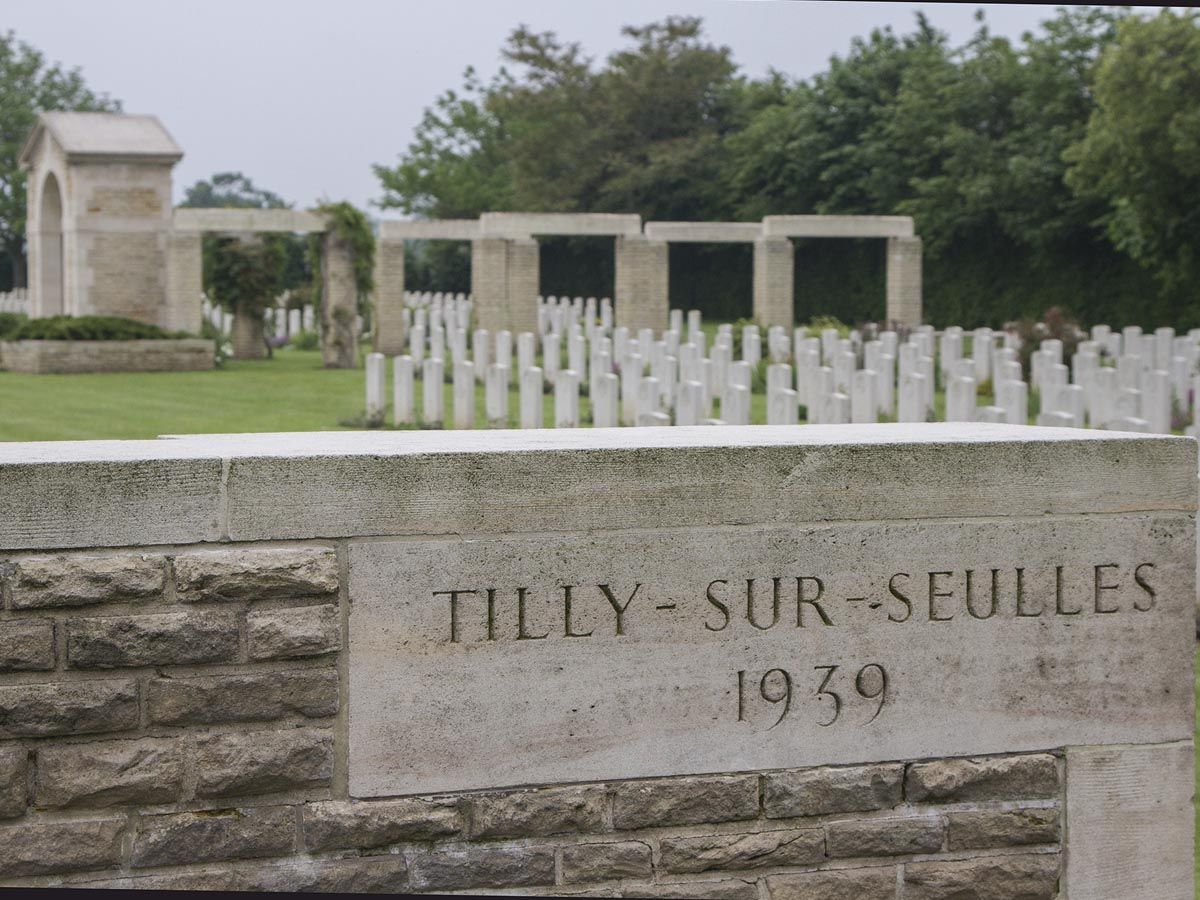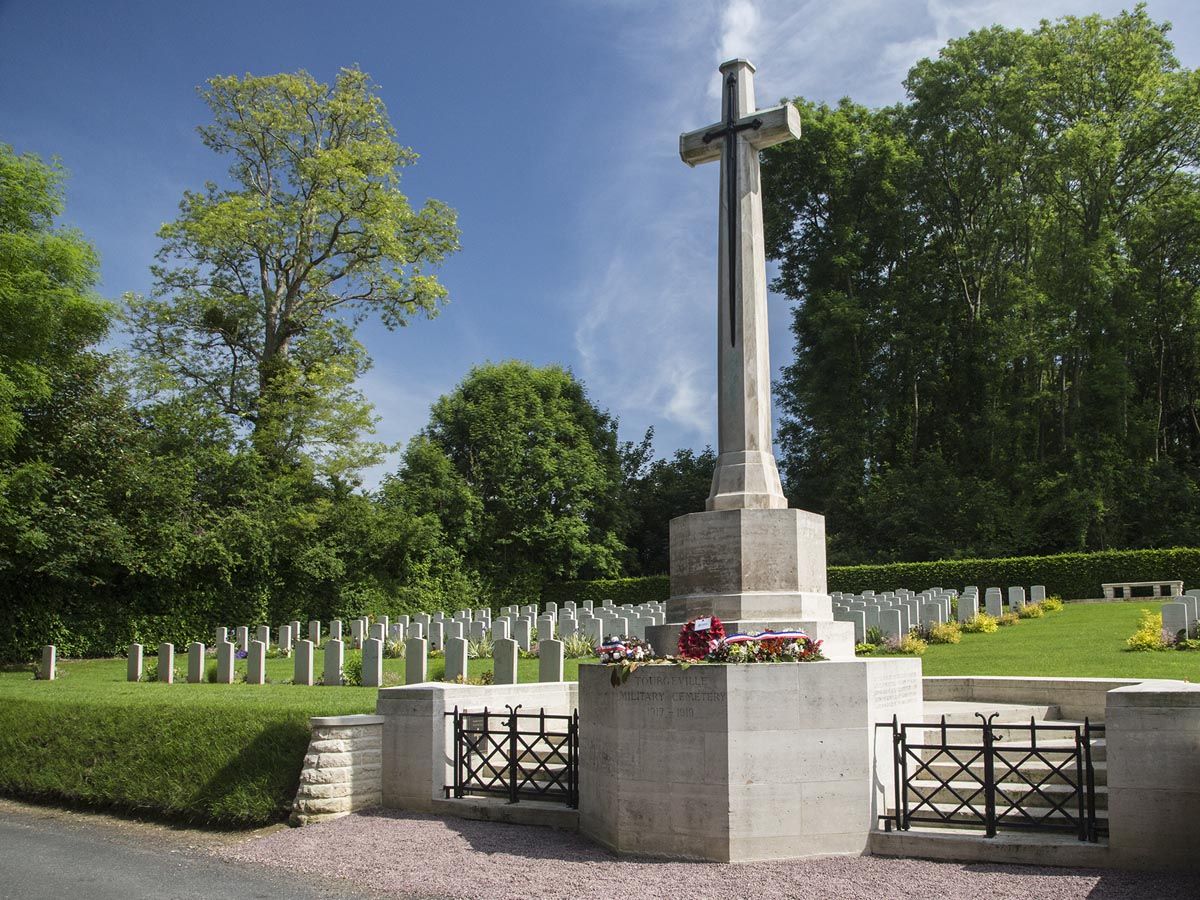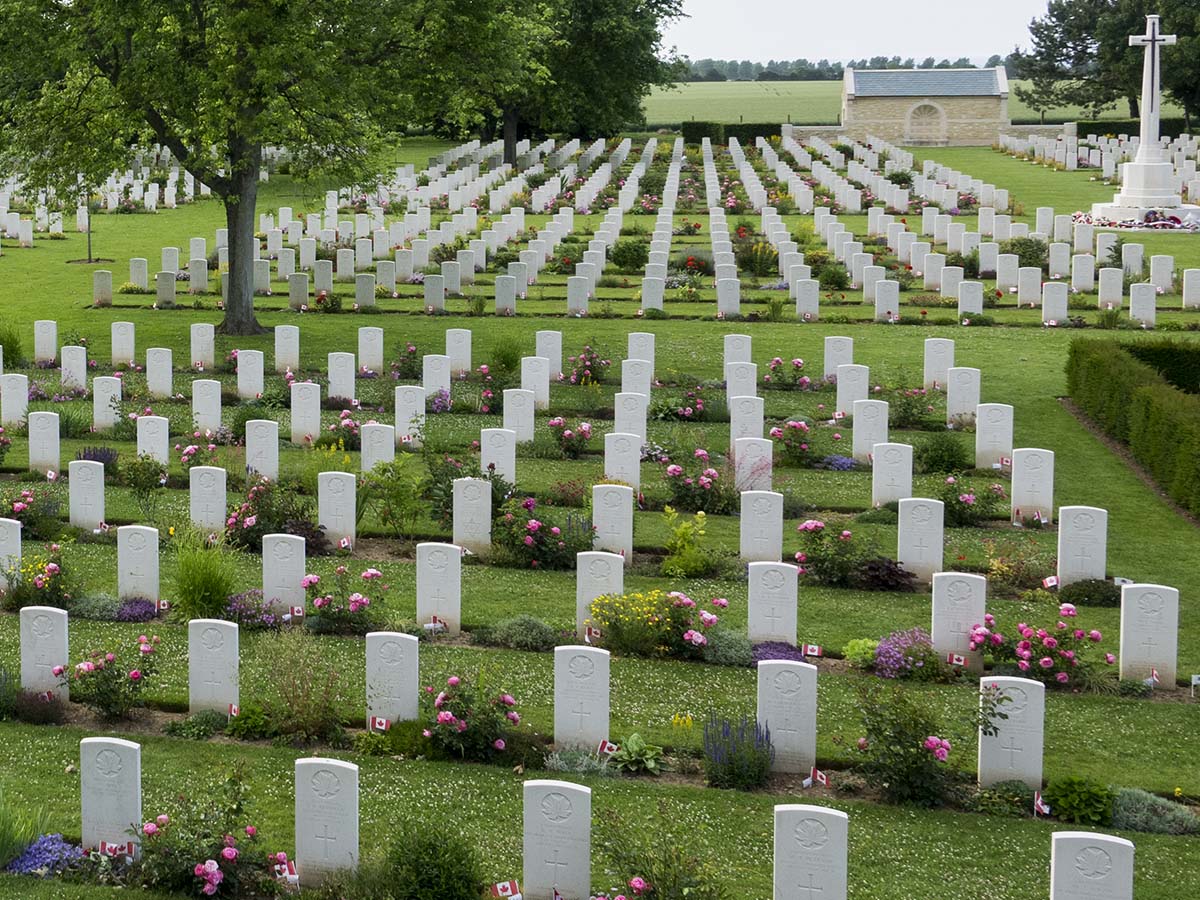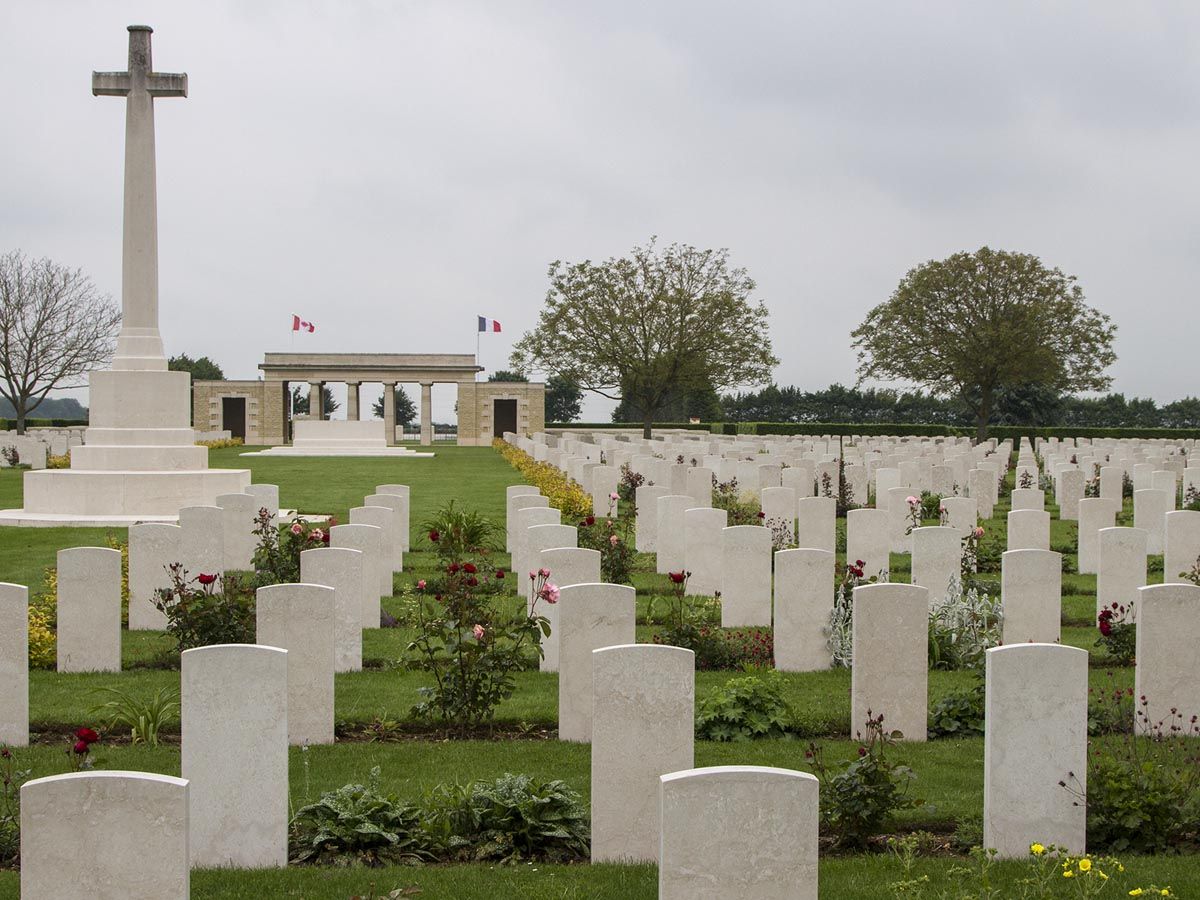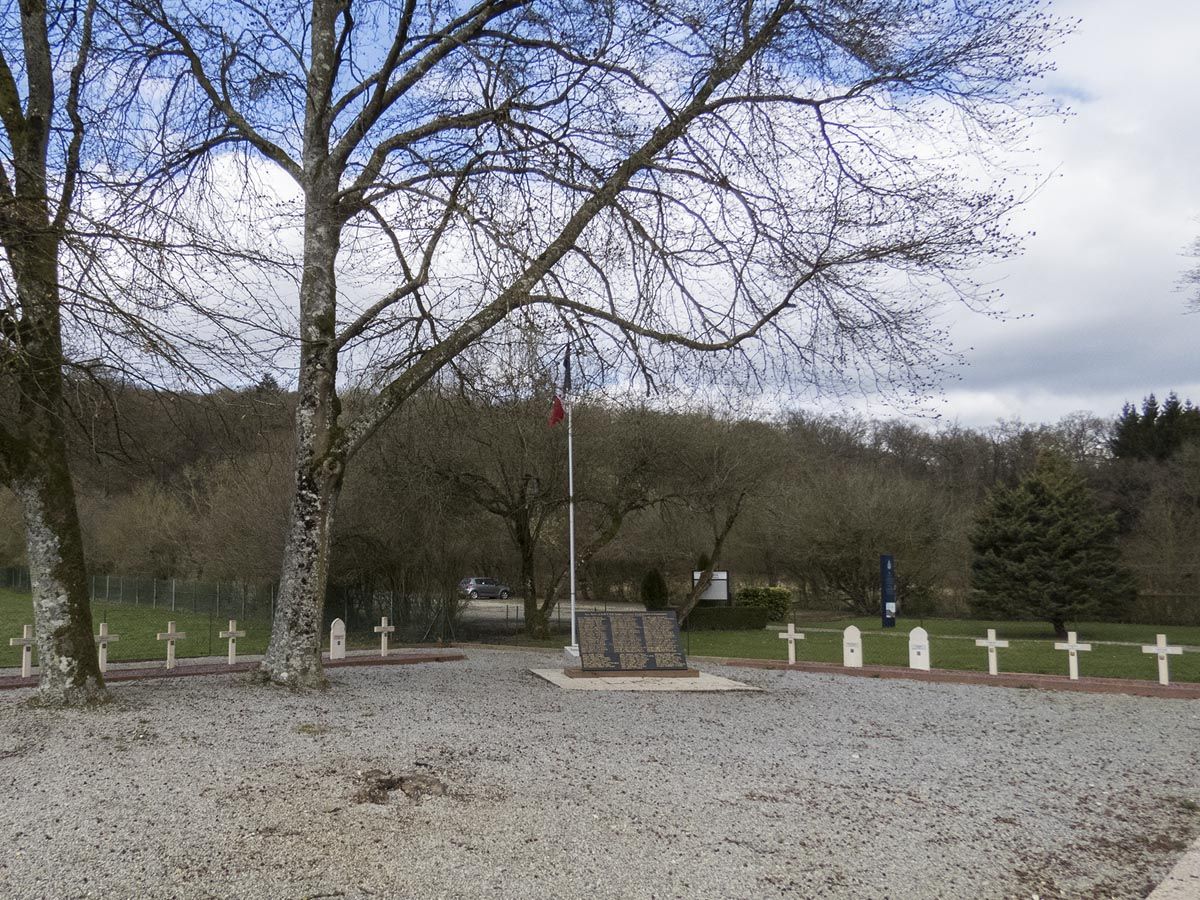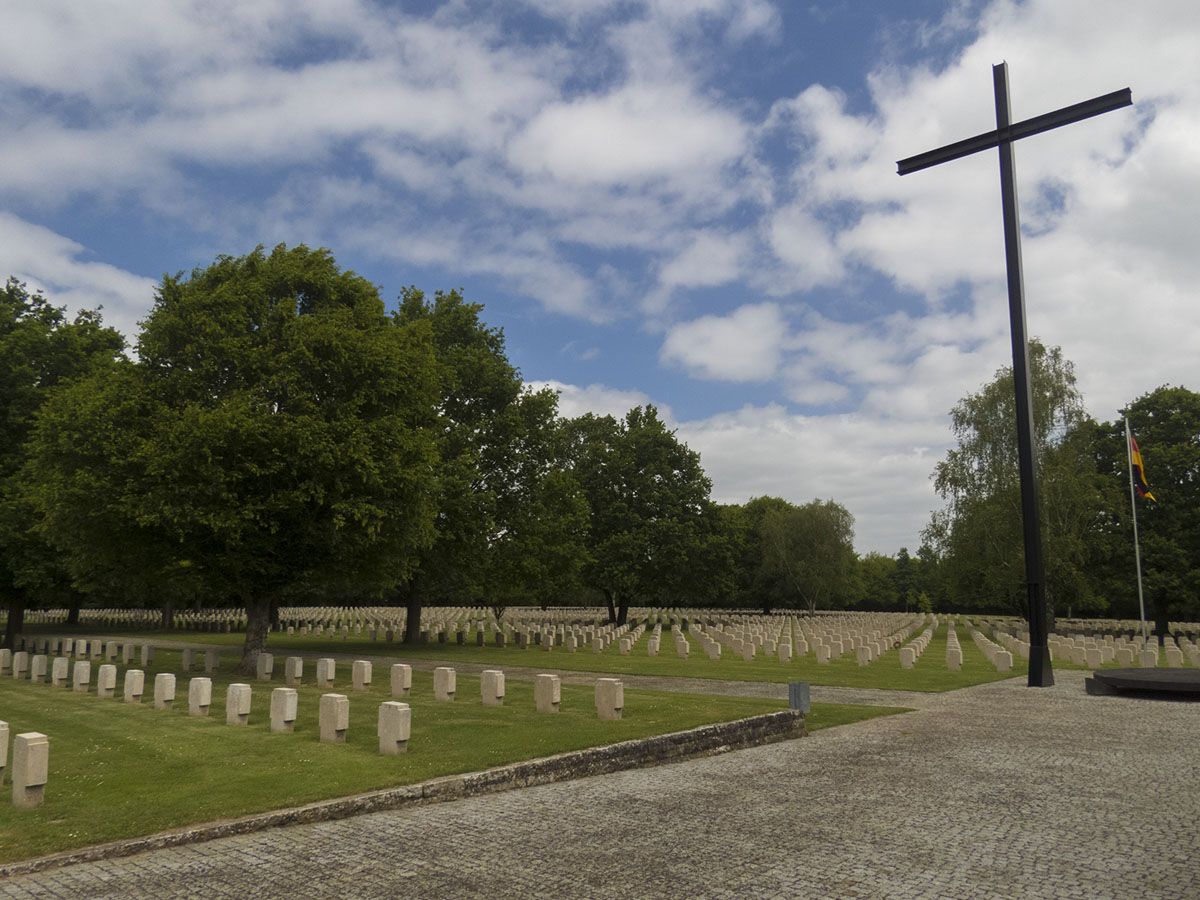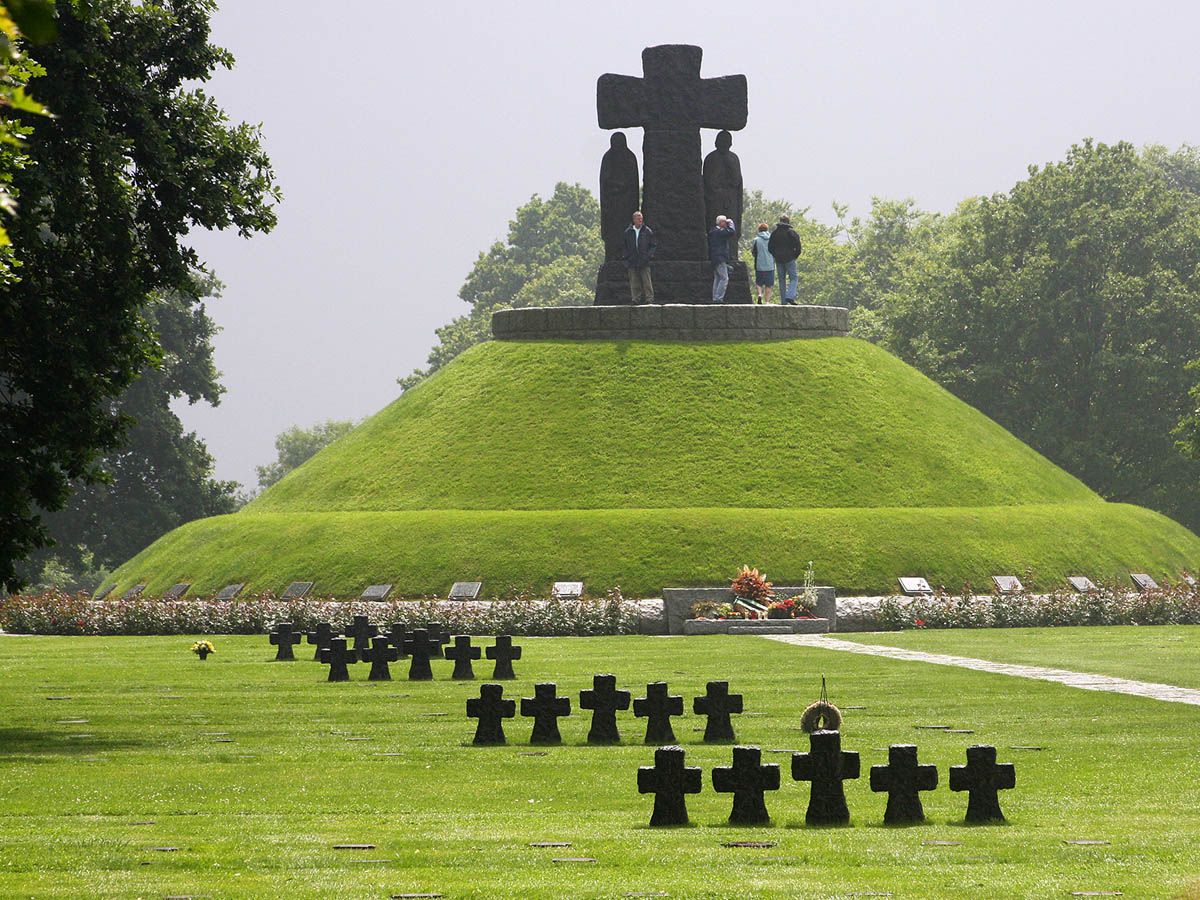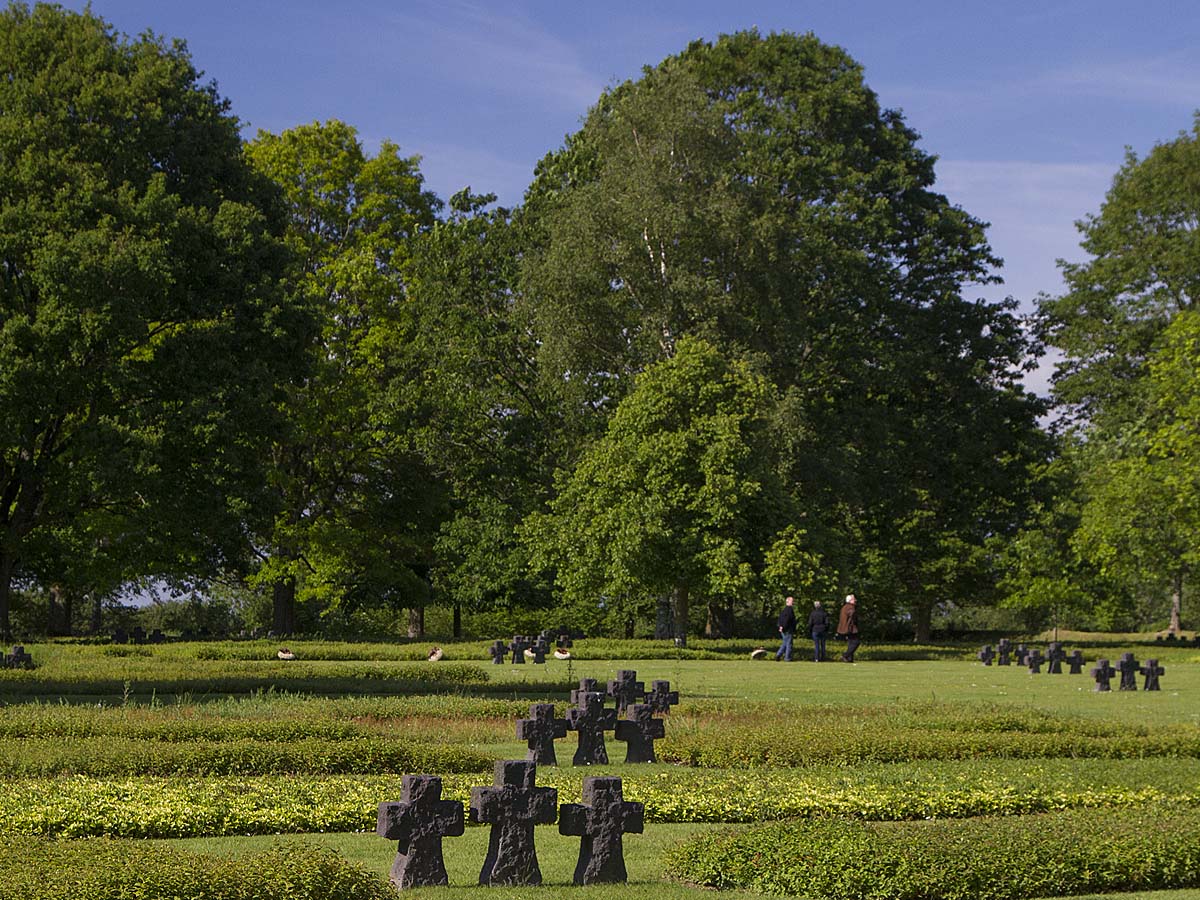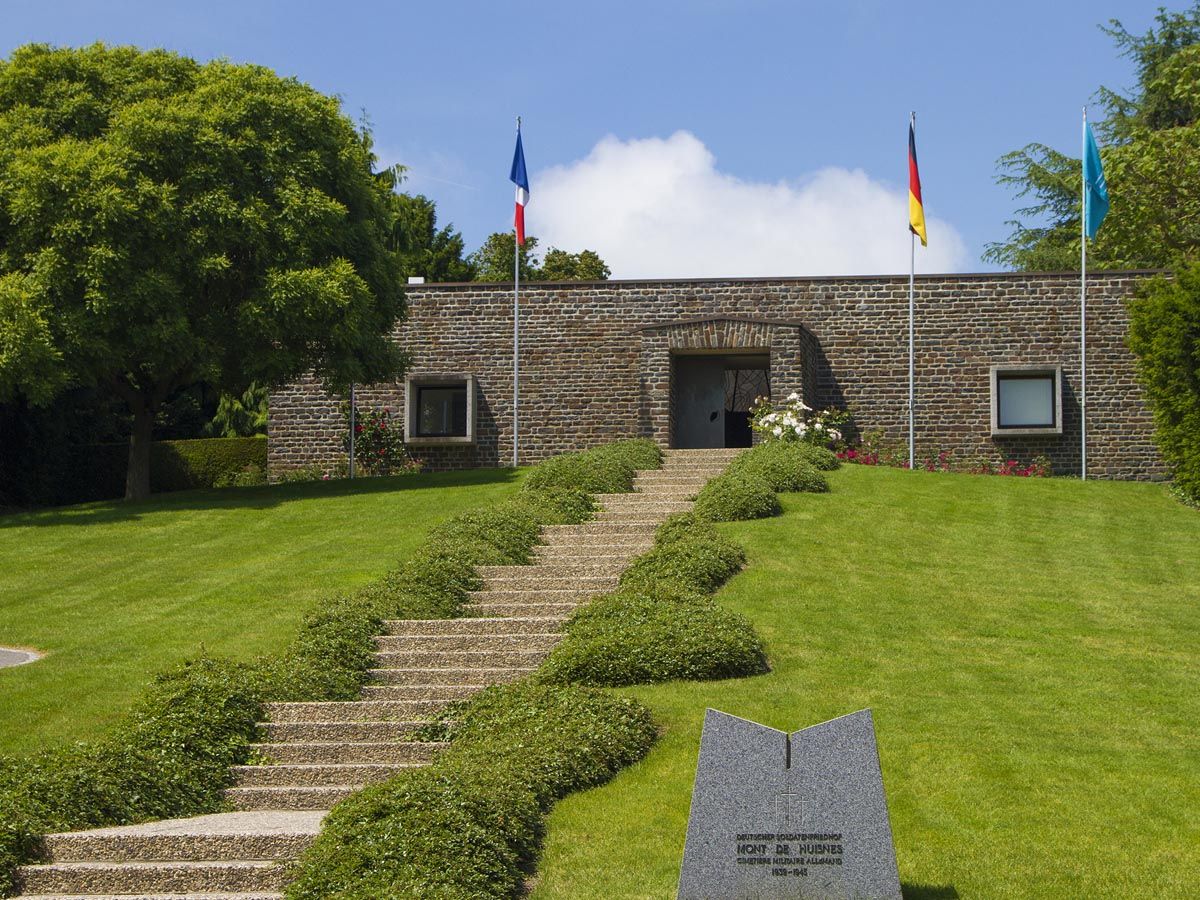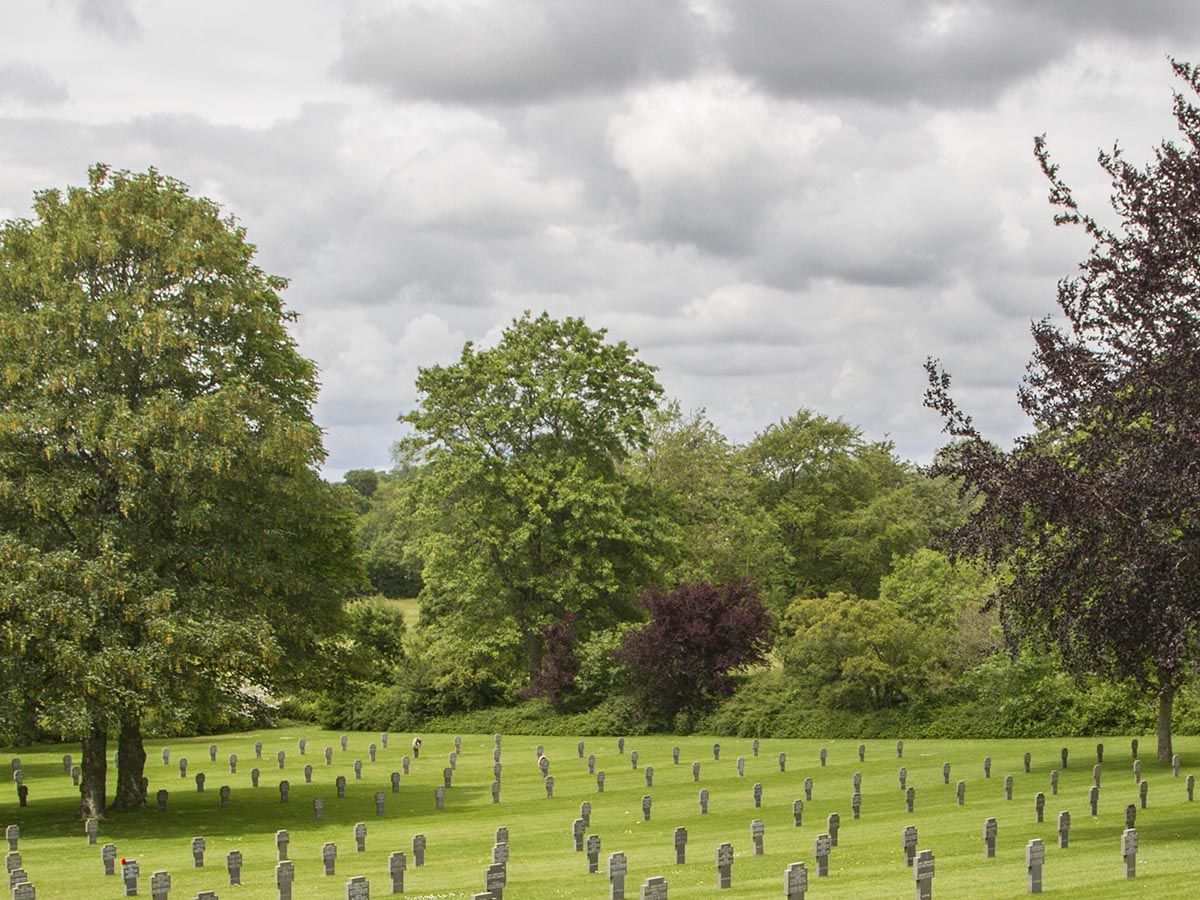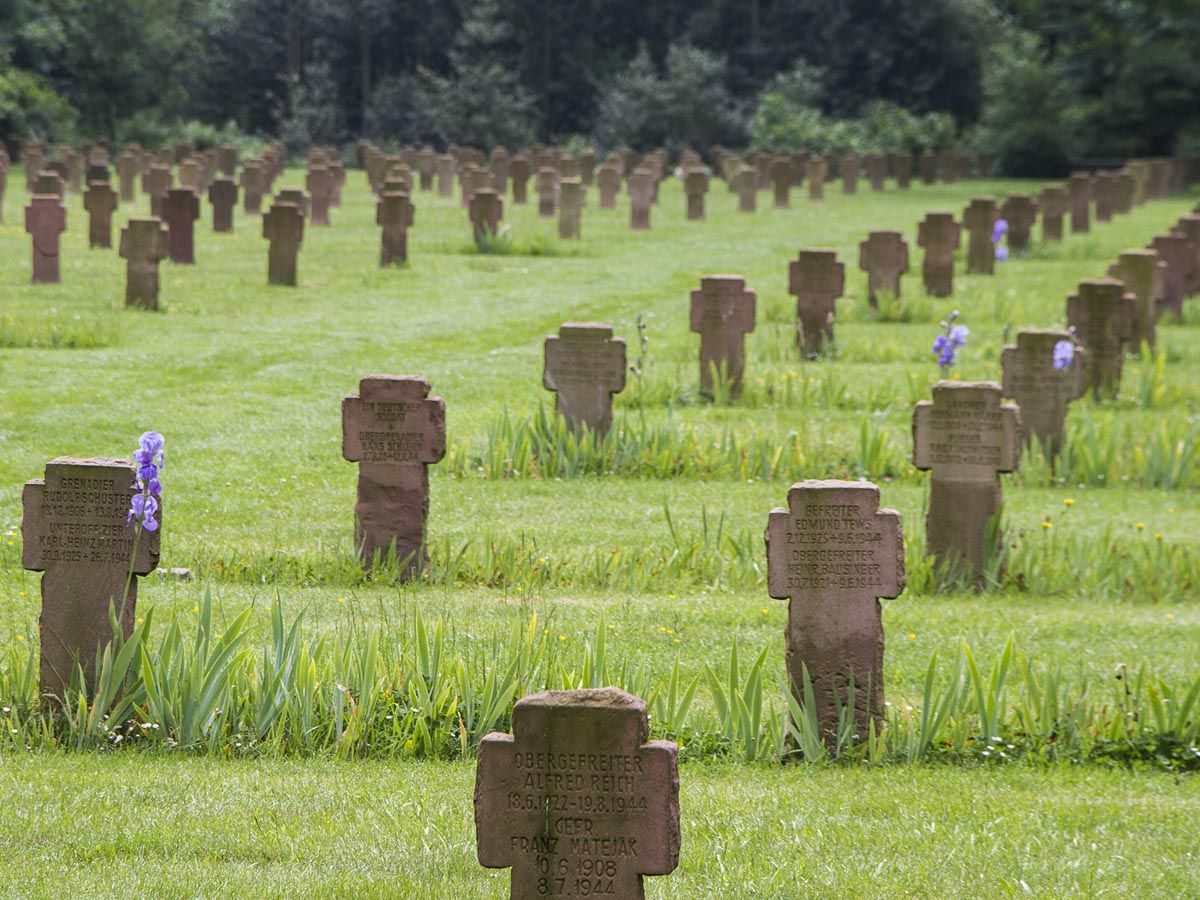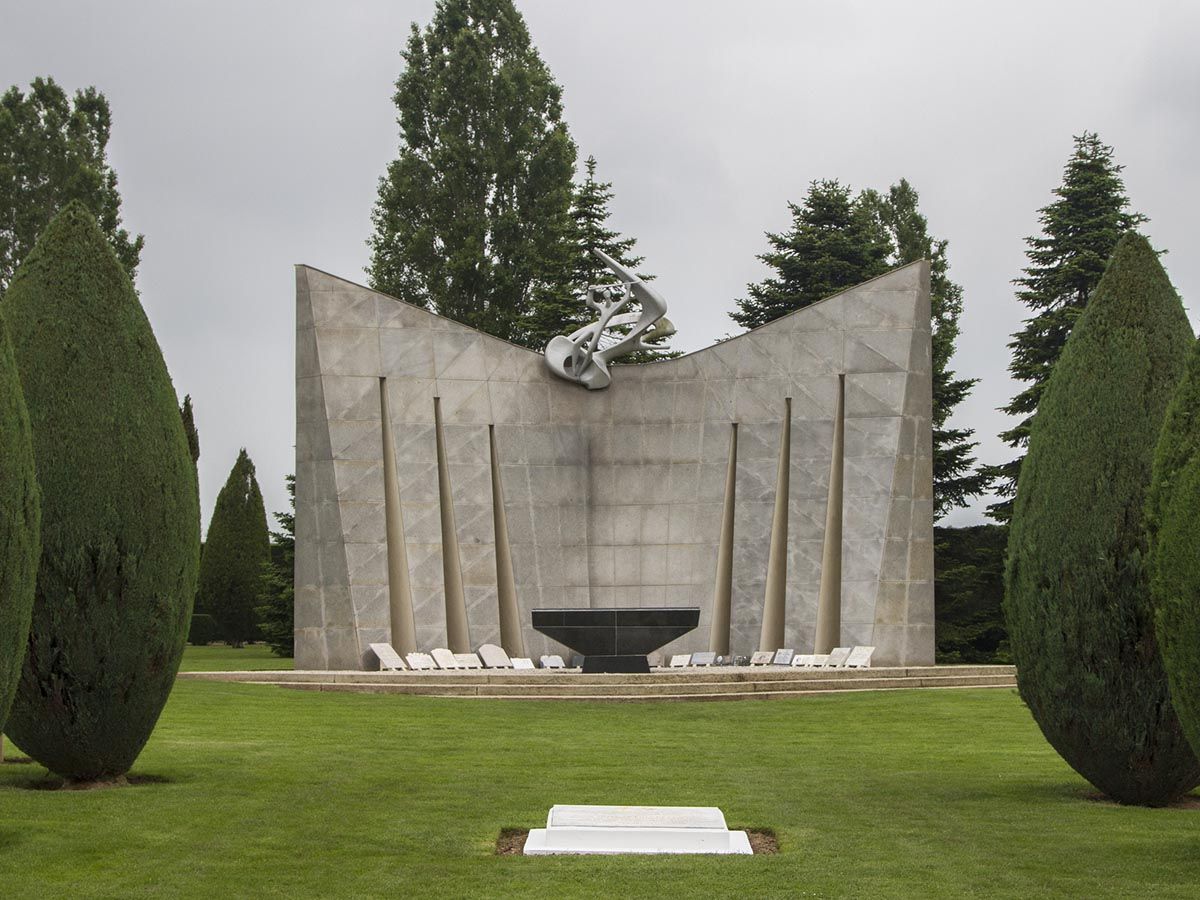The American Cemetery at Colleville-sur-Mer sits on a solemn piece of land overlooking Omaha Beach in Normandy, France. This sacred ground holds the remains of nearly 10,000 American soldiers who gave their lives during the D-Day landings and the Battle of Normandy in 1944. When you visit, you’ll feel the weight of history as you walk among the perfectly aligned white crosses and Stars of David stretching across the meticulously maintained grounds.
The cemetery is open daily from 9 a.m. to 6 p.m. between April and September, and 9 a.m. to 5 p.m. during the rest of the year, except for Christmas and New Year’s Day. Free guided tours lasting about an hour are available in English and French, giving you deeper insights into the stories behind the headstones and the significance of this powerful memorial.
As you stand at the edge of the bluffs where the cemetery is located, you can gaze down at Omaha Beach where American troops stormed ashore on that fateful June morning. This perspective helps you understand the tremendous challenges faced by the young men who fought here. The visitor center offers exhibits that put the cemetery and D-Day operations into context, making your visit not just a memorial experience but also an educational one about this pivotal moment in World War II.
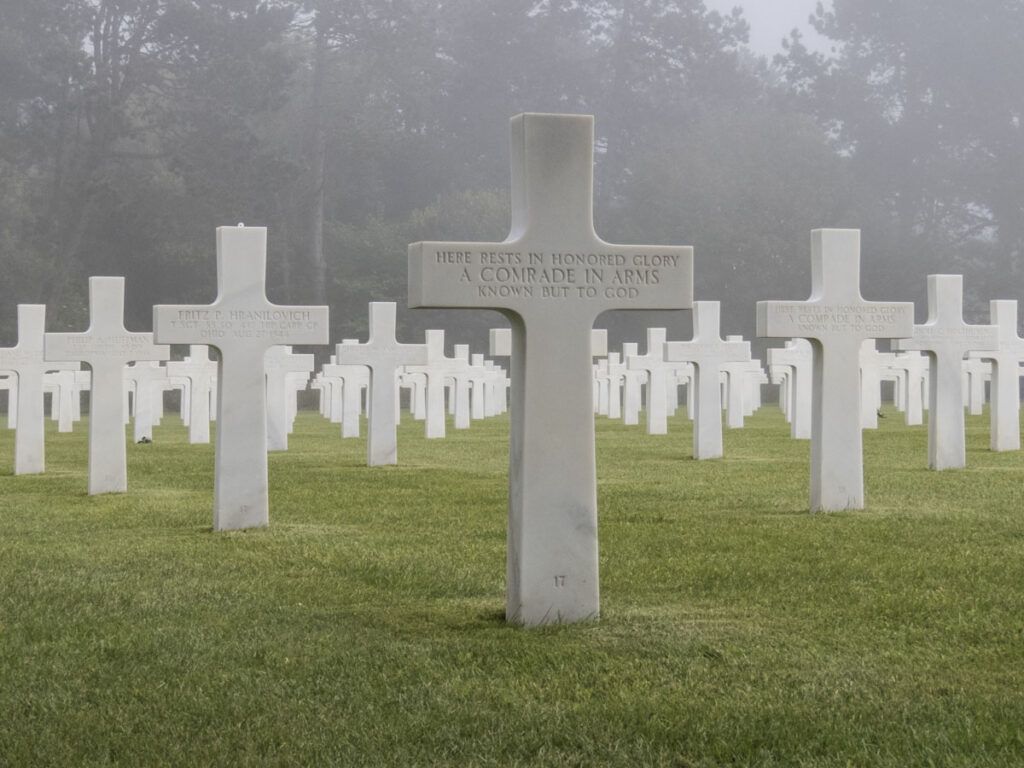
History and Significance
The Normandy American Cemetery at Colleville-sur-Mer stands as a powerful reminder of the sacrifice made by American soldiers during World War II. This sacred ground tells the story of courage and determination that changed the course of history in the summer of 1944.
The D-Day Landings
On June 6, 1944, Allied forces launched the largest amphibious invasion in military history. American troops landed on Omaha and Utah beaches, facing fierce German resistance. Omaha Beach, just below where the cemetery now stands, saw some of the bloodiest fighting.
The landing was chaotic and deadly. Many soldiers drowned before reaching shore, while others faced intense machine gun fire from German positions on the bluffs. Despite suffering heavy casualties, American forces pushed forward with remarkable courage.
By the end of that historic day, more than 2,400 Americans had lost their lives. Their sacrifice created a foothold in Nazi-occupied Europe that would eventually lead to victory.
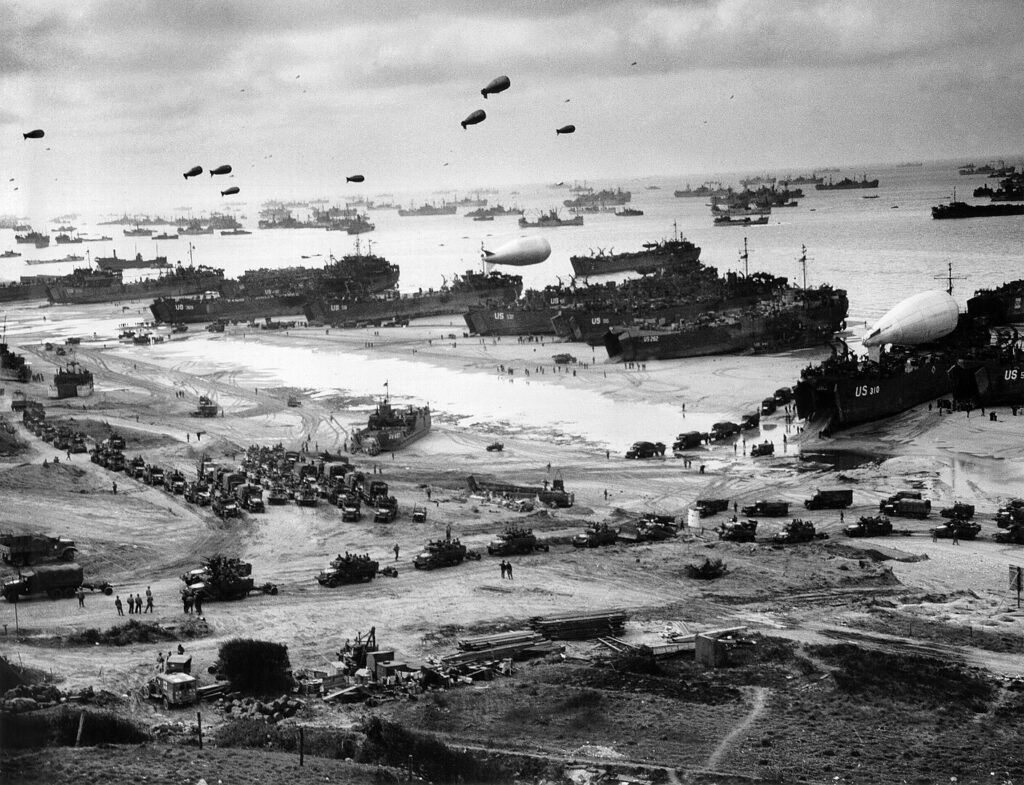
Operation Overlord
Operation Overlord was the code name for the larger Allied campaign to liberate Western Europe. Planning began in 1943, with General Dwight D. Eisenhower appointed as Supreme Commander of the Allied forces.
The operation involved deception tactics like Operation Fortitude, which convinced Hitler that the invasion would come at Pas-de-Calais rather than Normandy. This strategy helped reduce German defenses at the actual landing sites.
Over 156,000 Allied troops participated in the initial assault, supported by nearly 7,000 naval vessels and 11,000 aircraft. The massive scale of logistics involved was unprecedented.
You can see maps and artifacts from Operation Overlord at the cemetery’s visitor center, helping you understand how this complex military plan unfolded and changed the course of the war.
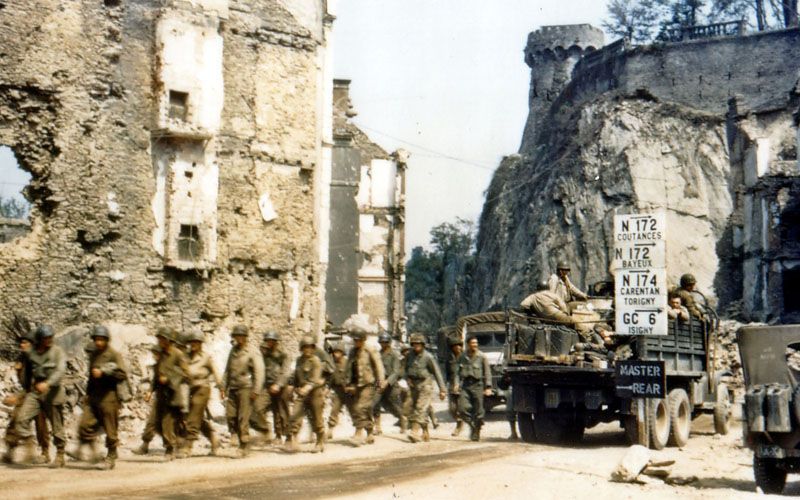
Battle of Normandy
Following D-Day, Allied forces fought through the hedgerow country of Normandy for nearly three months. This phase of combat, known as the Battle of Normandy, was crucial for expanding the beachhead and breaking out toward Paris and Germany.
American troops faced determined German resistance as they pushed inland. The difficult terrain of Normandy, with its dense hedgerows, provided natural defensive positions for German forces. Special equipment like “Rhino tanks” had to be developed to break through these barriers.
By late August 1944, the Allies had liberated Paris and forced a German retreat across the Seine River. The victory came at a high cost—over 29,000 Americans died during the Normandy Campaign.
Many of these brave soldiers now rest in the cemetery that overlooks the beaches where they fought.
Establishment of the Cemetery
The Normandy American Cemetery began as a temporary battlefield cemetery in 1944. After the war, the French government granted the United States a perpetual concession to the land, free of charge or taxation.
The American Battle Monuments Commission (ABMC), established in 1923, took responsibility for designing and maintaining the cemetery. The site was formally dedicated on July 18, 1956, as a permanent memorial to American sacrifice.
Today, the cemetery covers 70 hectares and contains 9,388 graves marked with white marble headstones. Among those buried here are three Medal of Honor recipients and 45 sets of brothers who rest side by side.
When you visit, you’ll notice the meticulous care given to the grounds. The ABMC ensures that this sacred place remains a fitting tribute to those who gave their lives for freedom.
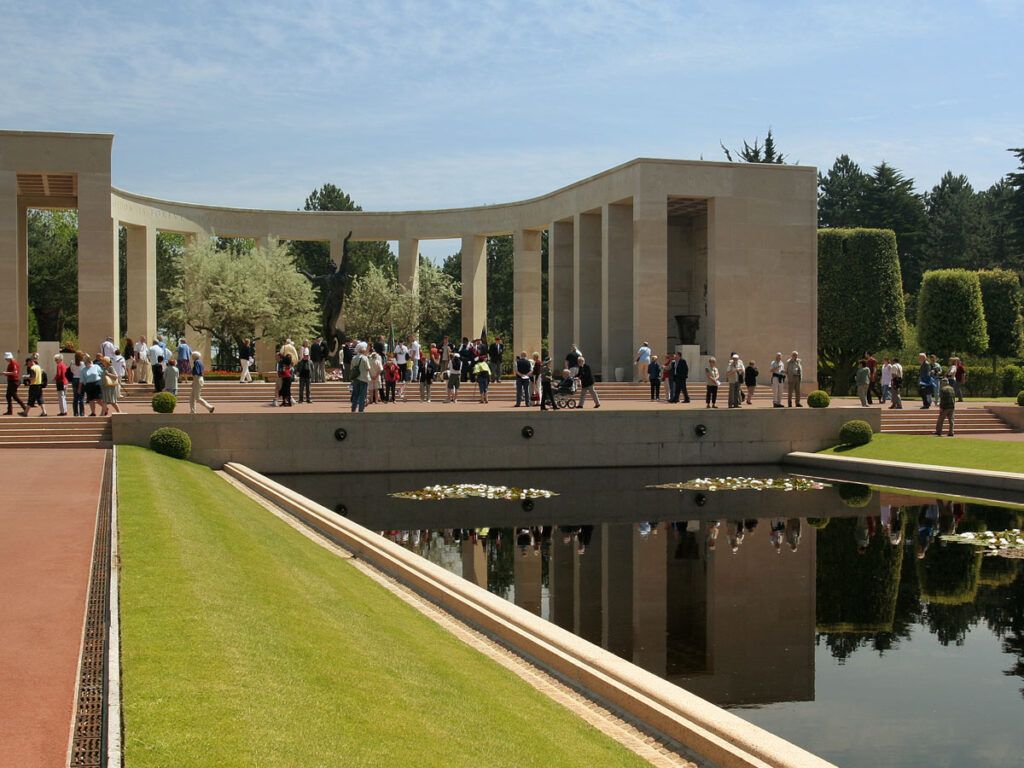
The Cemetery Grounds
The Normandy American Cemetery spans 172 acres of meticulously maintained grounds overlooking Omaha Beach. This solemn site honors the American soldiers who made the ultimate sacrifice during the D-Day landings and the Battle of Normandy.
Burial Area
The burial area contains 9,386 graves arranged in perfect alignment, creating a powerful visual reminder of the cost of freedom. Most markers are Latin crosses, with 149 Stars of David representing Jewish servicemen.
The pristine white marble headstones stand in stark contrast against the lush green lawn. Each grave faces west, toward America, symbolizing the soldiers’ journey home.
When you walk among the rows, you’ll notice some headstones marked “Here Rests in Honored Glory a Comrade in Arms Known But to God.” These mark the graves of unidentified soldiers.
The peaceful silence here is intentional. It encourages reflection on the sacrifice of these young men, most of whom were between 18 and 30 years old.
Walls of the Missing
Flanking the memorial, you’ll find the curved Walls of the Missing with 1,557 names inscribed in bronze. These honor soldiers whose remains were never recovered or identified.
When you examine the walls closely, you might notice some names have rosettes next to them. These mark individuals whose remains were later found and identified.
The names represent servicemen from all branches—Army, Navy, Coast Guard, and Army Air Forces. Each name is a reminder of someone who left home never to return.
Family members and visitors often leave flowers or small American flags by the names of their loved ones. It’s a touching tradition that keeps memories alive.
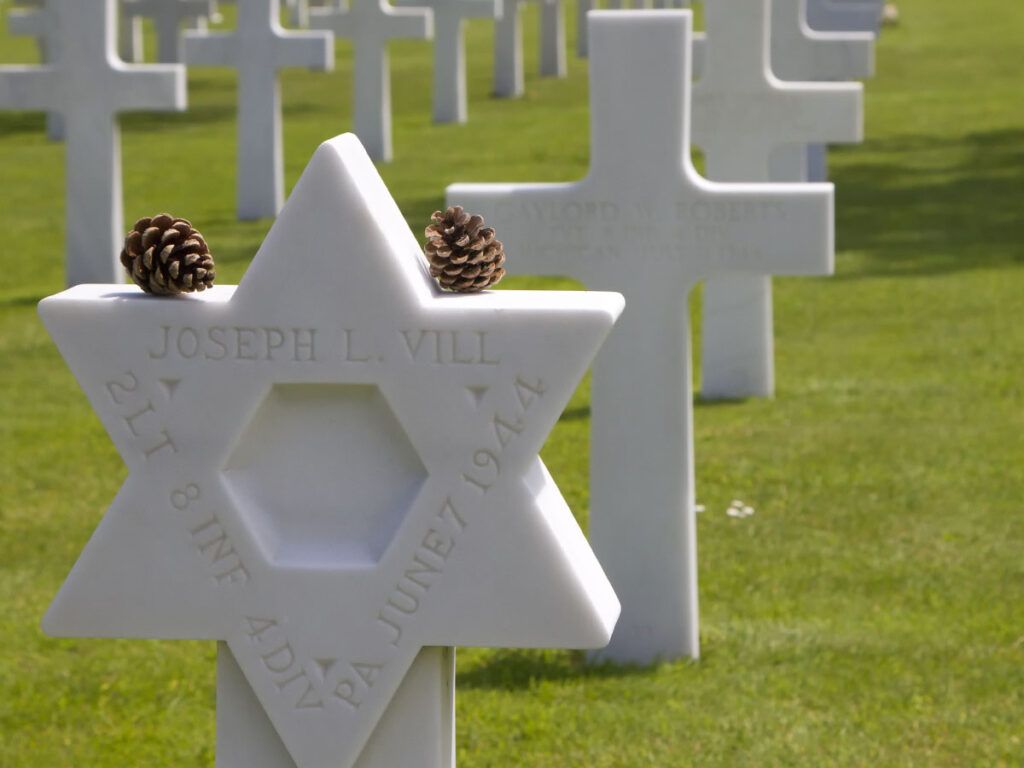
Reflecting Pool and Chapel
The rectangular reflecting pool sits at the cemetery’s center, creating a sense of peace and contemplation. The still water mirrors the sky and surrounding memorial structures.
Inside the small chapel, you’ll find a beautiful altar of black and gold marble. The ceiling displays a colorful mosaic depicting America blessing her sons as they depart for war.
On the chapel walls, you’ll see maps showing the military operations in Normandy. These help visitors understand the complex strategy behind the D-Day invasion.
The chapel’s stained glass windows allow soft, colored light to filter in, creating an atmosphere of reverence. It’s a place where many visitors pause to reflect or pray.
The Memorial and Semicircular Garden
The memorial building serves as the cemetery’s focal point. Its colonnade displays maps and narratives explaining the Normandy landings and subsequent battles.
Inside, you’ll find a circular table showing the military progress across Europe. The detailed graphics help you visualize how the D-Day invasion fit into the larger war effort.
The semicircular garden embraces the memorial, with carefully trimmed hedges and seasonal flowers. Benches positioned throughout allow for moments of quiet reflection.
From the memorial’s terrace, you have an unobstructed view of Omaha Beach below. This perspective helps you appreciate the challenging terrain faced by soldiers landing on D-Day.
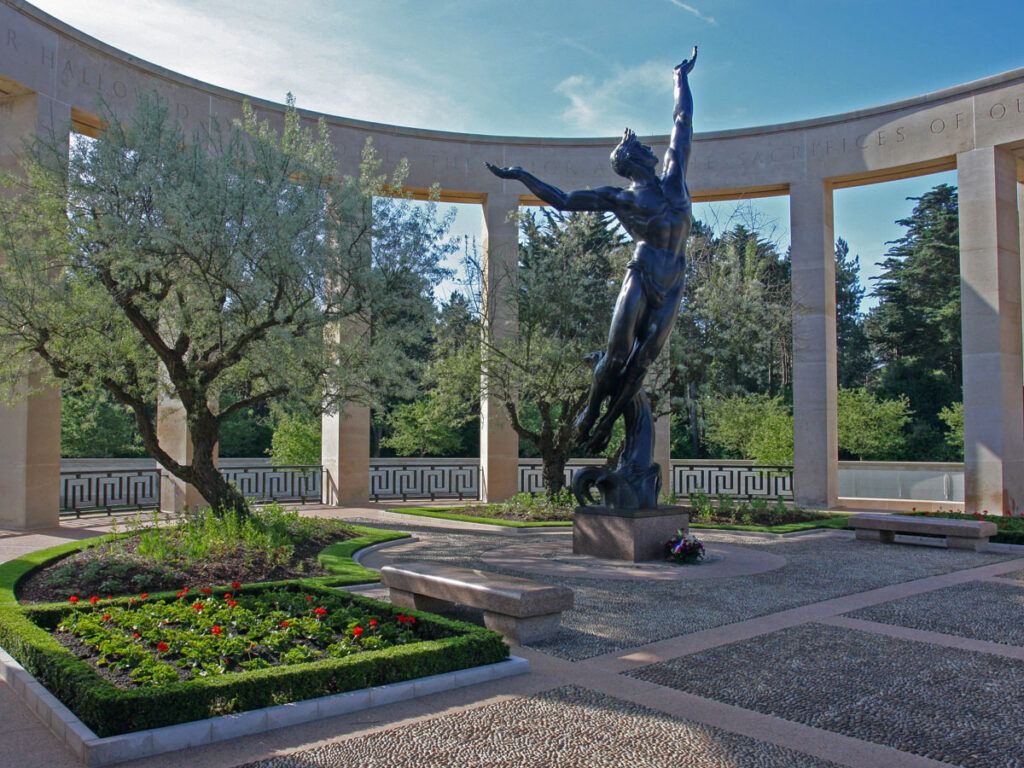
Spirit of American Youth Rising from the Waves
This striking bronze statue stands as the cemetery’s central symbol. The 22-foot sculpture depicts a young man rising from the waves, arms extended upward.
Created by Donald De Lue, the statue represents the spirit and sacrifice of the young Americans who crossed the Atlantic to liberate Europe. The figure’s upward movement suggests hope and triumph.
Inscribed on its base are the words: “Mine Eyes Have Seen the Glory of the Coming of the Lord.” This line from the Battle Hymn of the Republic adds to the memorial’s solemnity.
The statue faces the burial area, symbolically watching over the fallen. When you visit early morning or late afternoon, the lighting creates a particularly moving effect on the bronze figure.
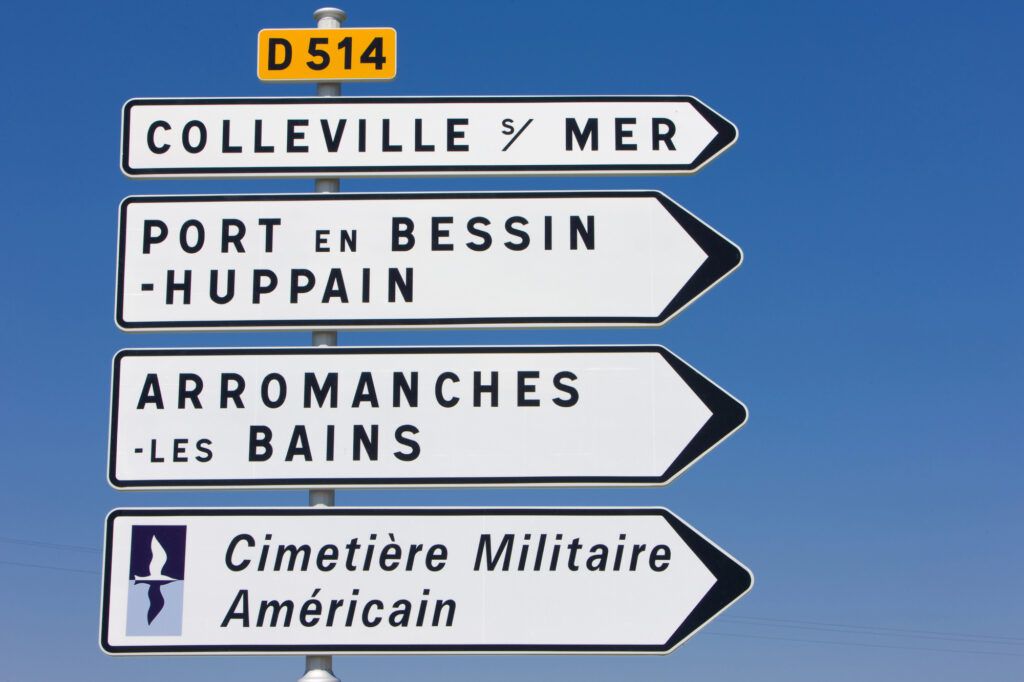
Visiting the Cemetery
The American Cemetery at Colleville-sur-Mer offers a profound and moving experience for visitors. The 172-acre site honors the sacrifices of American soldiers who fought in the Normandy campaign during World War II.
Getting to Colleville-sur-Mer
Traveling to Colleville-sur-Mer requires some planning as this small Normandy village isn’t directly connected to major transportation networks. The closest train stations are in Bayeux or Caen, making these cities essential transfer points.
From Paris, the most convenient route is taking a train to Bayeux, which serves as an excellent base for exploring Normandy‘s D-Day sites. The journey takes approximately 2-3 hours by train.
Once in Bayeux, visitors have several options to reach Colleville-sur-Mer:
- Organized tours: Many companies offer D-Day beach tours that include Colleville-sur-Mer
- Rental car: The most flexible option, about a 25-minute drive from Bayeux
- Taxi service: Available but can be expensive
- Public bus: Limited service, requires advance planning
For travelers starting elsewhere in Normandy, connections through Caen are also possible. The complete journey from other parts of Normandy can take up to 7.5 hours depending on your starting point.
Bike rentals are available in the region for those who prefer cycling, though keep in mind distances can be significant.
When planning your visit, consider staying overnight in Bayeux. This charming town offers plenty of accommodation options and makes an excellent hub for exploring Colleville-sur-Mer and the American Cemetery at a relaxed pace.
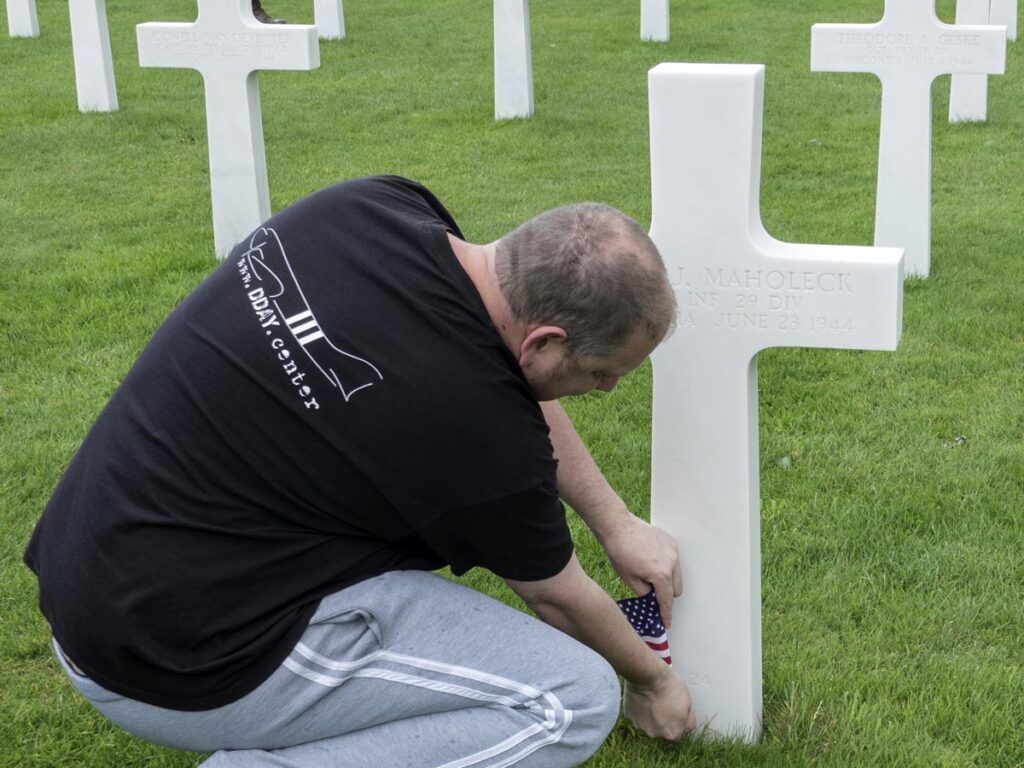
Visitor Center
The Visitor Center provides essential context before you explore the grounds. Opened in 2007, this modern facility offers exhibits that tell the story of D-Day and the Normandy campaign.
Inside, you’ll find personal stories of soldiers, interactive displays, and artifacts from the war. The exhibits are presented in both English and French, making them accessible to international visitors.
Plan to spend 1-2 hours exploring the Visitor Center. It’s well worth your time to understand the historical significance of what you’ll see on the grounds.
Visitor Center Hours:
- Open daily: 9:00 AM – 5:00 PM (April 15 to September 15)
- Open daily: 9:00 AM – 4:00 PM (September 16 to April 14)
- Closed: December 25 and January 1
Best Times to Visit
The cemetery is open year-round, but certain times offer distinct advantages. Summer months (June-August) provide the best weather but draw the largest crowds. Consider visiting in May or September for pleasant temperatures and fewer visitors.
Early mornings (before 10 AM) and late afternoons (after 3 PM) tend to be less crowded. This allows for a more contemplative experience as you walk among the 9,388 graves.
June 6th commemorations draw thousands of visitors, including veterans and dignitaries. While these ceremonies are deeply moving, they require advance planning and patience with crowds and security measures.
Winter visits offer a quiet, reflective atmosphere but can be cold and windy due to the cemetery’s clifftop location overlooking the English Channel.
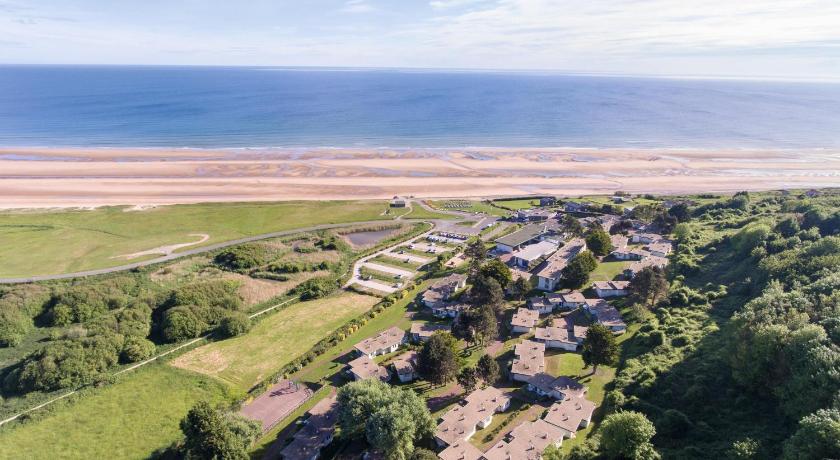
Colleville-sur-Mer Accommodation Guide
Colleville-sur-Mer offers several lodging options for visitors paying tribute to the D-Day landing sites. Most accommodations provide easy access to Omaha Beach and the American Cemetery, with choices ranging from charming B&Bs to vacation rentals with stunning coastal views.
Hotels and Guesthouses
Colleville-sur-Mer and its surrounding area feature a variety of hotels and guesthouses to suit different budgets. The Belambra Clubs Colleville-sur-Mer – Omaha Beach stands out as a family-friendly option with excellent ratings from previous guests. This resort-style accommodation offers convenient access to the historic beaches while providing comfortable amenities.
Several bed and breakfast establishments dot the countryside, with rates starting around $87 per night. These B&Bs often provide a more intimate experience with personalized service and local knowledge from hosts who understand the historical significance of the area.
For travelers seeking more traditional hotel accommodations, the nearby towns of Bayeux and Port-en-Bessin offer additional options just a short drive away from the D-Day sites.
Recommended nearby hotels:
- Château La Chenevière
- Hotel Villa Lara & Villa
- Belle Normandy
- Belambra Clubs – Omaha Beach
- Ferme du Clos Tassin
Vacation Rentals
Vacation rentals provide an excellent alternative for families or groups visiting Colleville-sur-Mer. The Villa Kahlo Omaha Beach is highly recommended for its location and amenities, allowing visitors to experience the Normandy coast at their own pace.
Many vacation homes in the area feature:
- Full kitchens for self-catering
- Multiple bedrooms for families or groups
- Private gardens with countryside views
- Walking distance to Omaha Beach
Rental properties tend to book quickly during the summer months and anniversary commemorations of D-Day (early June). Making reservations 3-6 months in advance is advisable, especially for prime properties with ocean views.
For budget-conscious travelers, sharing a larger rental property with friends or family can provide substantial savings compared to booking multiple hotel rooms.
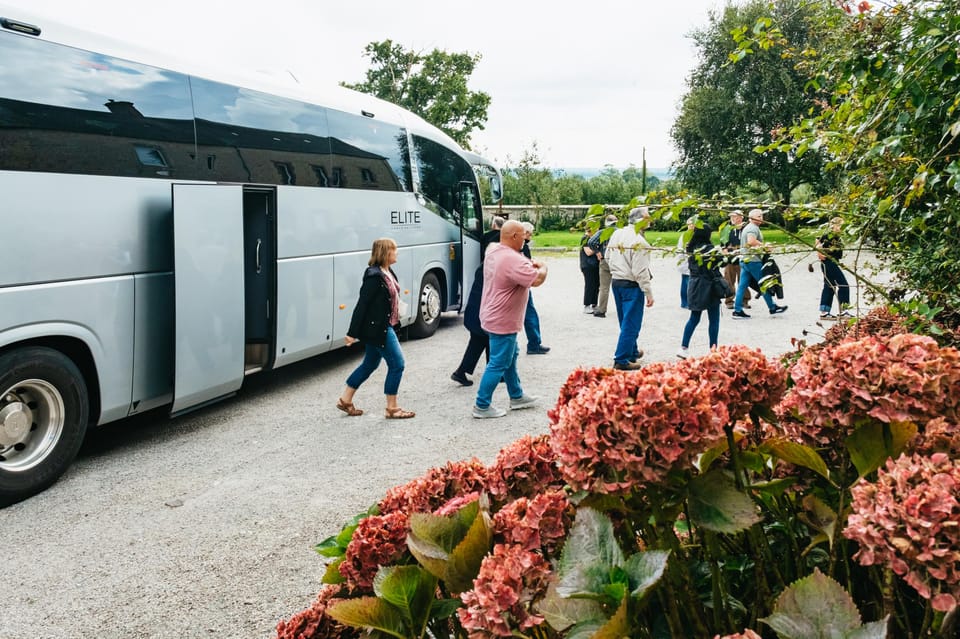
Guided Tours and Educational Programs
Free guided tours are available in both English and French throughout the day. These 45-minute tours provide valuable insights about the cemetery and the soldiers buried there. No reservation is needed – simply check the schedule at the Visitor Center upon arrival.
Staff historians lead specialized tours focusing on specific military units or aspects of the Normandy campaign. These tours offer deeper historical context than self-guided visits.
For educational groups, the cemetery offers tailored programs for students. Teachers can request materials in advance to prepare students for their visit. These programs connect young visitors to this important chapter of United States and French history.
Recommended D-Day Tours from Paris:
- From Paris: Normandy D-Day Beaches Day Trip
- From Paris: 2-Day Normandy & Brittany Tour
- Normandy American D-Day Experience (From Bayeux Station)
Recommended D-Day Tours from Bayeux:
- From Bayeux: American D-Day Sites in Normandy Full-Day Tour
- From Bayeux: American D-Day Sites in Normandy Half-Day Tour
- From Bayeux: Half-Day Normandy WWII Sidecar Tour
- Full-Day US Battlefields of Normandy Tour from Bayeux
Recommended Private D-Day Tours:
- From Paris: Normandy D-Day Landing Beaches Full-Day Tour
- From Rouen: Normandy D-Day Beaches Private Full-Day Tour
- Private Tour: Rouen, Bayeux, and Falaise Day Trip from Bayeux
- Normandy WWII Private Half-day Sidecar Tour From Bayeux
Recommended Band of Brothers Tours:
The American Battle Monuments Commission website provides additional resources to enhance your visit, including printable guides and mobile apps with self-guided tour options.
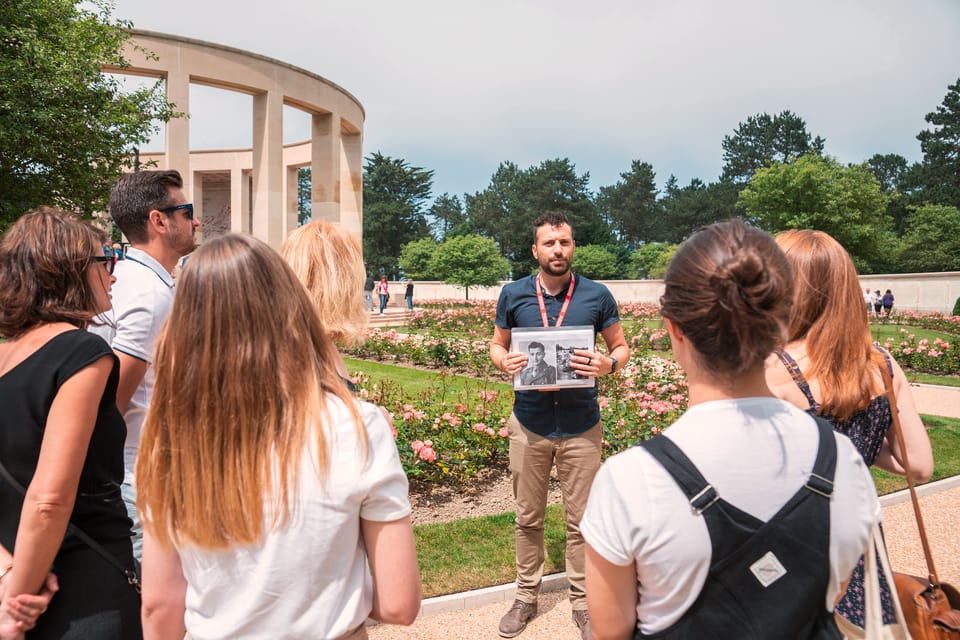
Historical Tours
Many tour operators provide specialized D-Day tours focused on Omaha Beach and the American Cemetery in Colleville-sur-Mer. These tours typically last 4-8 hours and include transportation from nearby cities like Bayeux or Caen.
Guides are often history experts who share moving stories about the soldiers who fought here. Some tours extend to Pointe du Hoc and other D-Day landing beaches, offering a comprehensive view of Operation Overlord.
For a deeper understanding of the Allied invasion, consider tours that include the Pegasus Bridge, where British forces made a crucial landing. Many visitors find these guided experiences emotionally powerful, as guides connect the landscape to specific events of June 6, 1944.
Tour prices typically range from €50-120 per person, depending on duration and group size.
Walking and Cycling Tours
For those who prefer a more intimate experience, walking tours provide an immersive way to explore Colleville-sur-Mer. Small group walking tours often focus on specific aspects of the D-Day landings or the Battle of Normandy.
Cycling tours have become increasingly popular, allowing visitors to cover more ground while still experiencing the landscape personally. These tours typically follow paths connecting important sites around Omaha Beach and inland areas.
Several operators offer self-guided options with detailed maps and historical information. These tours allow you to set your own pace while following expert-designed routes.
Both walking and cycling tours benefit from the region’s relatively flat terrain, making them accessible to most visitors. The gentle Norman countryside provides a peaceful backdrop to contemplate the momentous events that occurred here.
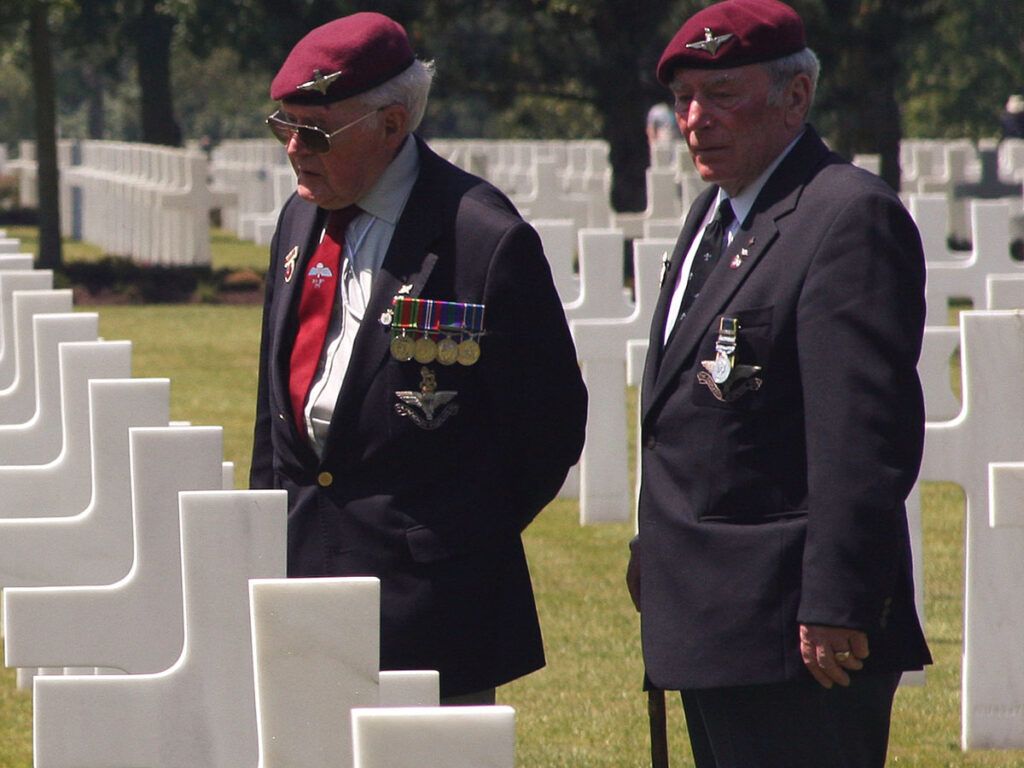
Remembering the Heroes
The cemetery hosts several important ceremonies throughout the year. The largest is the D-Day Anniversary commemoration on June 6, which draws thousands of visitors. In 2024, the 80th anniversary was a particularly moving event.
Memorial Day ceremonies in May also pay tribute to the fallen with wreath-laying, military honors, and speeches from dignitaries. These events often include veterans, though their numbers are dwindling as years pass.
You can witness the daily flag-lowering ceremony which takes place before closing. This simple yet powerful ritual includes taps being played as the American flag is carefully folded.
Check the American Battle Monuments Commission website before your visit for upcoming ceremony dates and details.
Educational Resources
The visitor center offers excellent resources to help you understand the sacrifice of those buried here. Interactive displays explain the D-Day landings and subsequent battles through maps, photographs, and personal stories.
You’ll find educational films playing throughout the day that provide context about World War II and the Normandy Campaign. These presentations last about 20 minutes and are available in multiple languages.
Guided tours led by knowledgeable staff bring the stories of individual soldiers to life. These tours are free and offered several times daily during peak season.
For those with smartphones, a downloadable app provides self-guided tour information and helps locate specific graves. Many markers have QR codes linking to additional information about the soldiers.
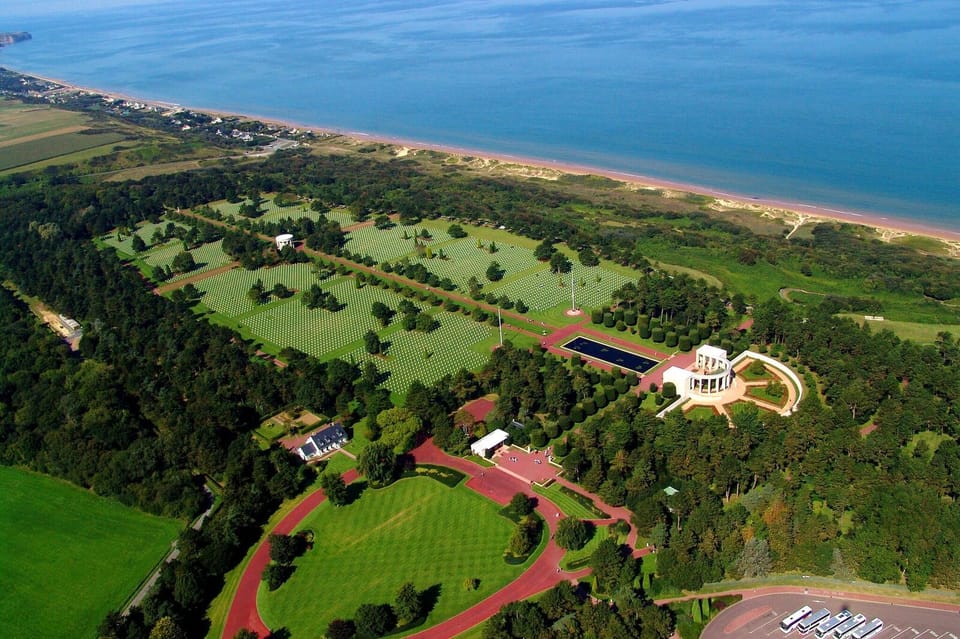
Personal Reflections
Walking among the 9,388 pristine white crosses and Stars of David creates a powerful emotional experience. You might want to bring flowers or small American flags, which are permitted to be placed at individual graves.
The cemetery offers a contemplation area facing the sea where you can sit quietly and reflect. Many visitors find writing in a journal helps process their feelings about this solemn place.
Consider researching a soldier before your visit. The cemetery staff can help locate specific graves if you provide the name in advance.
Many visitors choose to walk down to Omaha Beach after visiting the cemetery. Standing where these brave men landed often provides a deeper connection to their sacrifice.
Cultural Impact
The cemetery gained worldwide recognition through Steven Spielberg’s “Saving Private Ryan” (1998), which opens and closes with emotional scenes filmed at this sacred site. The white crosses stretching across the landscape create one of cinema’s most powerful visual tributes to fallen soldiers.
Tom Hanks’ character walking among the graves resonated with millions of viewers, bringing the cemetery’s solemn beauty into living rooms worldwide.
Beyond film, the cemetery appears in numerous novels like “The Longest Day” by Cornelius Ryan and memoirs of WWII veterans who returned to honor their fallen comrades.
Travel guides often feature the cemetery prominently, with authors like Rick Steves describing it as a “must-visit” destination for Americans traveling in France.
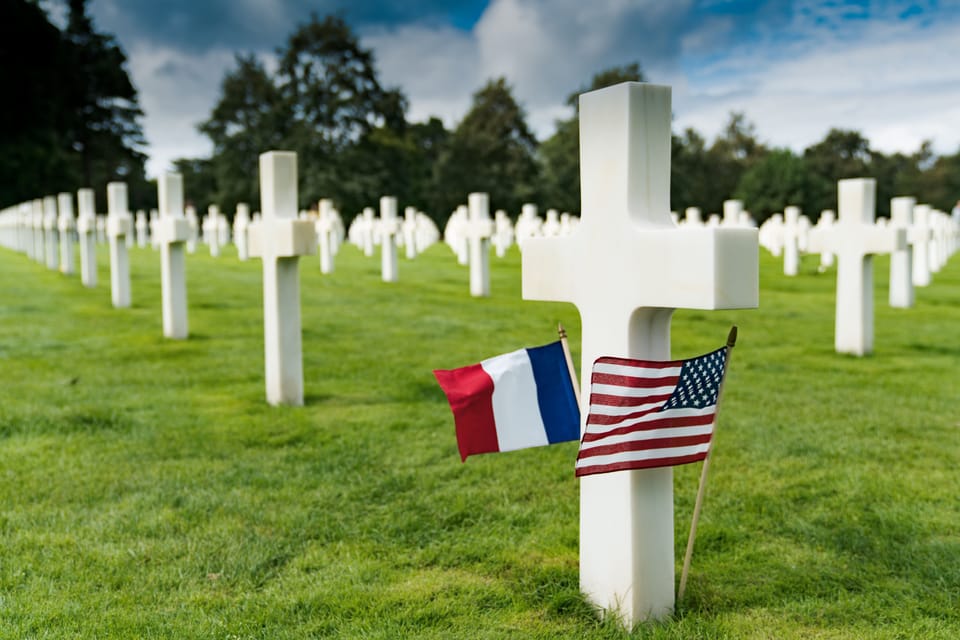
Public Perception and Reverence
When you visit the American Cemetery, you’ll notice people from various nationalities paying their respects, not just Americans. This international reverence shows the cemetery’s universal significance.
The site receives over one million visitors annually, making it one of the most visited war memorials in Europe. Many visitors leave small American flags or flowers at individual graves.
School groups regularly tour the grounds as part of educational programs about World War II and the price of freedom. Teachers use the cemetery to help students connect emotionally with historical events.
For many American families with relatives who served in the war, visiting the cemetery becomes a pilgrimage—a chance to honor ancestors who helped liberate Europe from tyranny.
Nearby Attractions
The American Cemetery is surrounded by several important historical sites and charming Norman towns. Visitors can easily spend several days exploring the rich D-Day history and beautiful Norman countryside in this region.
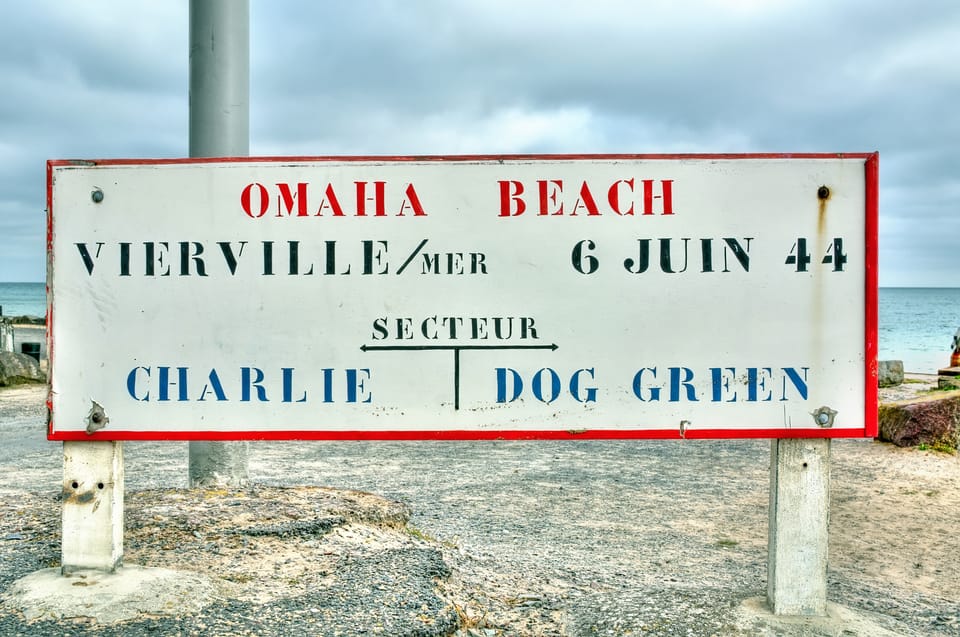
Omaha Beach and Museums
Just below the American Cemetery lies Omaha Beach, one of the most significant D-Day landing sites. You can walk along the same shoreline where Allied forces landed on June 6, 1944. The beach today is peaceful, with several monuments marking the historic events.
The Overlord Museum in Colleville-sur-Mer offers an excellent collection of military vehicles, uniforms, and personal items. It’s located near the cemetery entrance, making it a convenient stop.
The Memorial Museum of Omaha Beach in Saint-Laurent-sur-Mer provides detailed exhibits about the D-Day landings. You’ll find personal stories and artifacts that bring the events to life.
Don’t miss the Longues-sur-Mer battery between Omaha and Gold beaches. The German gun battery still has its original guns in place, offering a glimpse into the Atlantic Wall defenses.
Town of Bayeux and Bayeux War Cemetery
Bayeux, just 20 minutes from Colleville-sur-Mer, is the first major town liberated by the Allies. This charming medieval town escaped WWII bombing and retains its historic character.
The Bayeux Tapestry Museum houses the famous 230-foot embroidery depicting the Norman Conquest of 1066. While not related to WWII, it’s a must-see historical treasure.
The Museum of the Battle of Normandy offers comprehensive exhibits on the entire Normandy Campaign. You’ll find detailed maps, equipment, and multimedia presentations.
The Bayeux War Cemetery, the largest British Commonwealth cemetery in France, contains graves of over 4,600 Commonwealth soldiers. Unlike the American Cemetery, it includes German graves, providing a different perspective on the war’s impact.
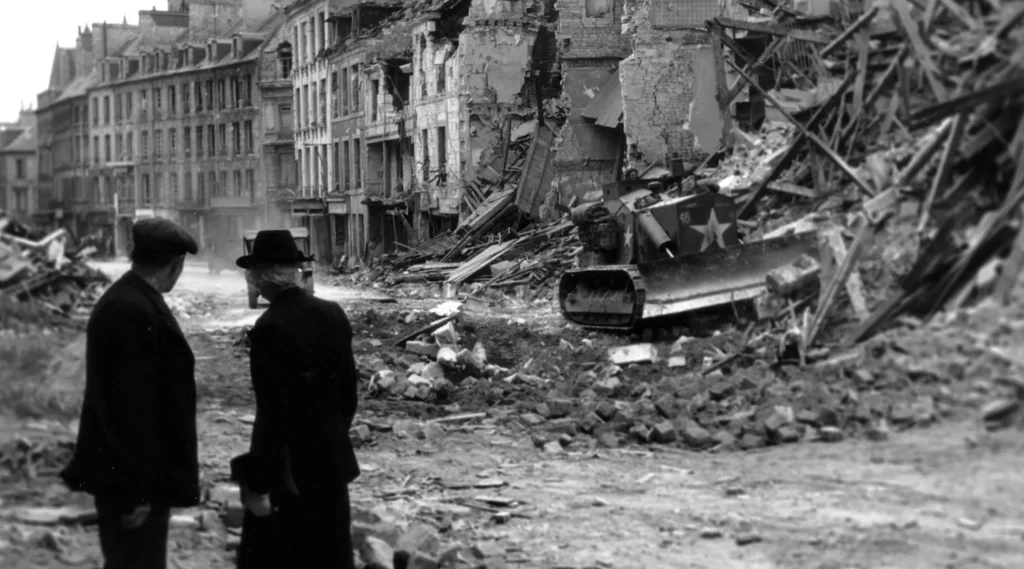
City of Caen
Caen, about 45 minutes from Colleville-sur-Mer, was heavily damaged during the Battle of Normandy. The city has been beautifully rebuilt while preserving its history.
The Caen Memorial Museum (Mémorial de Caen) is one of Europe’s best WWII museums. You’ll need several hours to explore its extensive exhibits covering the war, D-Day, and the Cold War period. The museum takes an educational approach to promoting peace.
Caen’s historic center features William the Conqueror’s castle and two beautiful abbeys. These medieval structures survived the bombing and provide a striking contrast to the war history.
The city offers excellent dining options and shopping if you need a break from historical sites. You’ll find everything from casual cafés to fine Norman cuisine featuring local seafood, cheese, and apple products.
Practical Information
Here’s what you need to know before visiting Colleville-sur-Mer, home to the famous Normandy American Cemetery and important D-Day sites. These tips will help you navigate the area comfortably and respectfully.
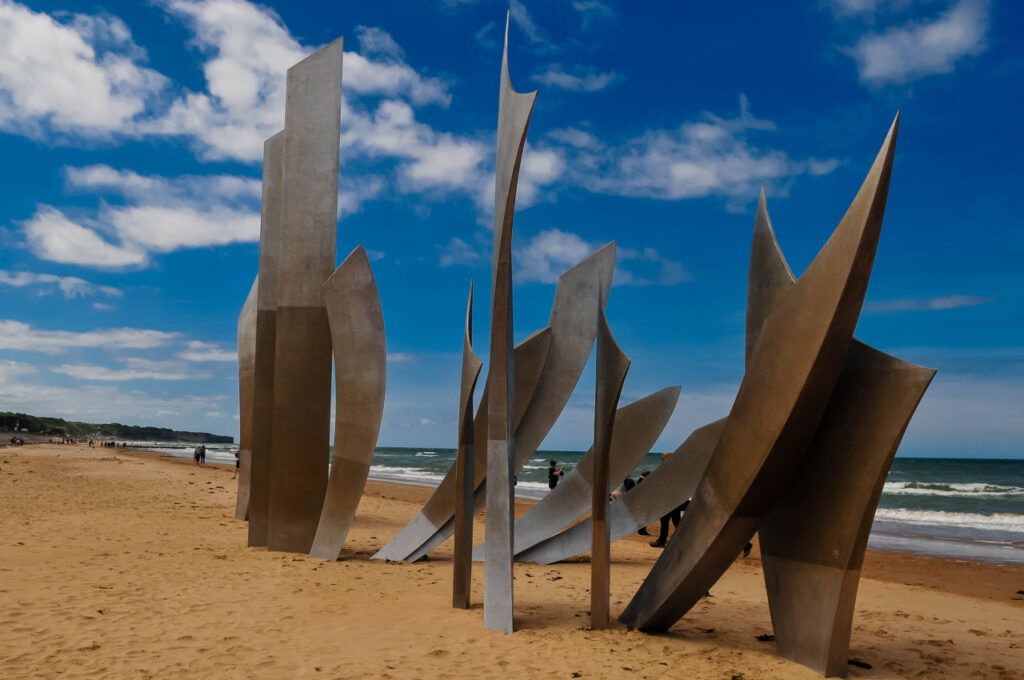
Travel Tips
The best time to visit Colleville-sur-Mer is from May to September when the weather is pleasant. Expect larger crowds in June, especially around D-Day anniversary events (June 6th).
Public transportation is limited in this rural area. Renting a car gives you the most flexibility to explore the beaches and memorial sites at your own pace.
If you’re staying in Bayeux (just 20 minutes away), you can join organized tours to Colleville-sur-Mer. Many include transportation and knowledgeable guides who enhance the historical experience.
The Normandy American Cemetery is open daily from 9am to 5pm (6pm in summer). Admission is free, and guided tours last about 45-60 minutes in English or French.
Bring comfortable shoes for walking on beaches and memorial grounds. A light jacket is recommended even in summer as coastal winds can be chilly.
Local Etiquette
The Normandy American Cemetery is a solemn place of remembrance. Keep conversations quiet and respectful during your visit. Photography is permitted, but selfies are considered inappropriate at grave sites.
Most locals in Colleville-sur-Mer appreciate basic French greetings. Simple phrases like “Bonjour” (hello) and “Merci” (thank you) go a long way.
The D-Day beaches and memorials hold profound significance for many visitors, especially veterans and their families. Be mindful of others who may be having emotional moments.
French dining customs include longer, more leisurely meals than Americans might be used to. Don’t rush your dining experience – embrace the slower pace.
Small shops in the area may close for lunch (typically 12-2pm) and may not open on Sundays.
Safety and Emergency
Colleville-sur-Mer is generally very safe for tourists. The main precaution is watching for tide changes if walking on Omaha Beach, as they can come in quickly.
The European emergency number is 112, which works from any phone. For police specifically, dial 17.
The nearest hospital facilities are in Bayeux. If you’re on medication, bring enough for your trip as the local pharmacy options are limited.
Weather can change rapidly in Normandy. Check forecasts before heading out and pack a waterproof jacket even on sunny days.
Pickpocketing is rare but can occur in crowded tourist areas, especially during peak season events. Keep valuables secure and be aware of your surroundings.

